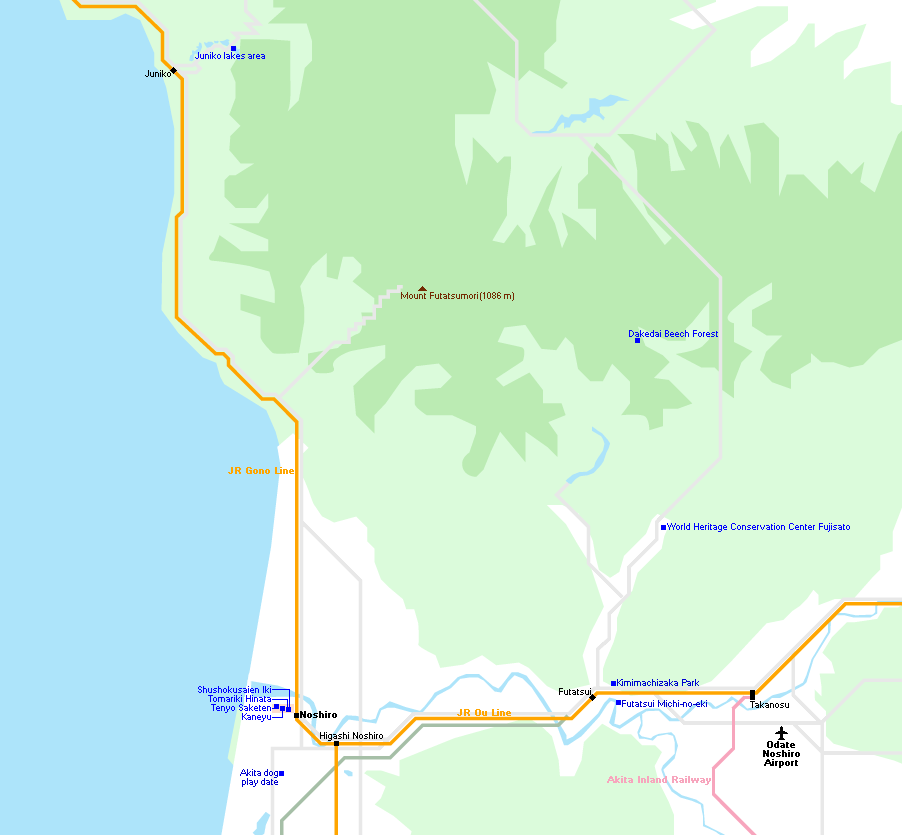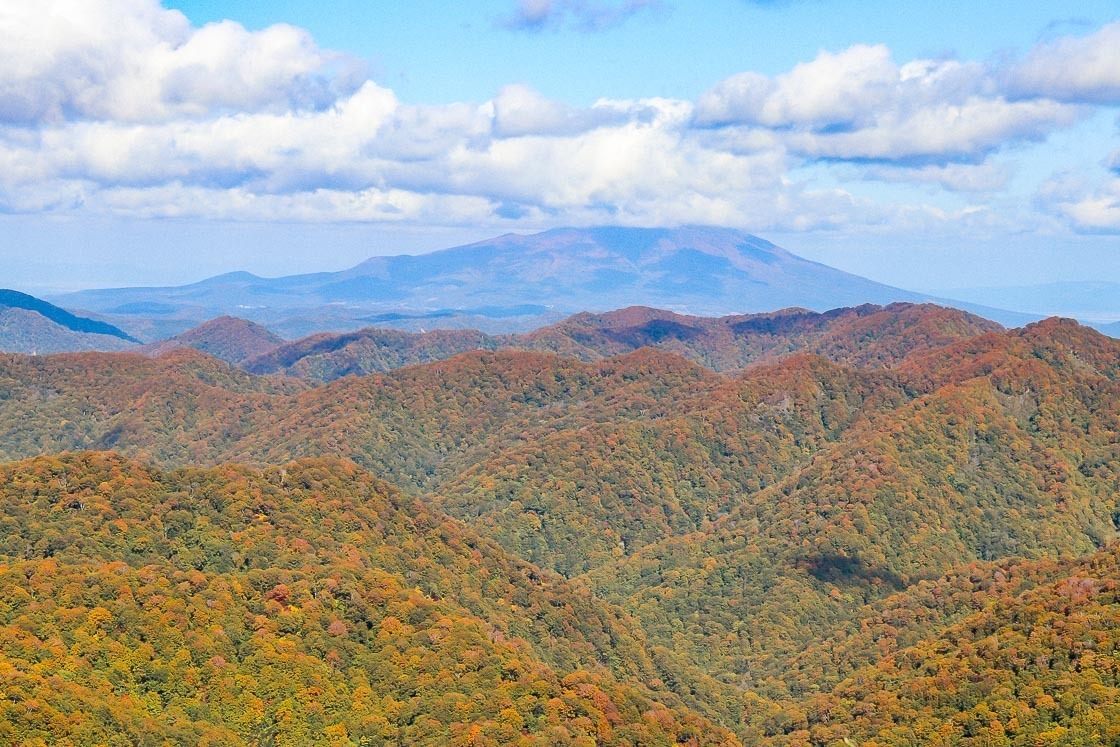Shirakami Sanchi: The best of northern Akita
Akita Prefecture is home to atmospheric hot spring baths and outstanding landscapes. The prefecture, which is located at the northwestern end of the main island of Japan always has something exciting to see and do all year round. There are a number of items that are unique to Akita and well-known throughout the country, and they include: Shirakami Sanchi, a mountainous region which contains one of Japan's pristine beech forests, the Akita Kanto Matsuri, a popular summer festival featuring paper lanterns balanced on poles of varying lengths, and Namahage, who are scary-looking mountain gods in the Oga Peninsula.
On this trip, I spent 3 days and 2 nights in the Akita Shirakami area in the north of the prefecture. I went hiking, sampled the local cuisine and participated in a number of activities over the three days and had a blast of a time there. As I was there in autumn, the temperatures were slightly brisk, but the fall colors were amazing. I enjoyed myself so much that I'm considering going back in a different season to experience a different side of the Akita Shirakami are.
Day one
My first day started off relatively easy, and the main activities were taking in the fall colors at Kimimachizaka Park and canoeing down the Yoneshiro River. I picked up my rental car after arriving at Odate Noshiro Airport and made my way towards Futatsui Michi-no-eki, a local rest stop. The conveniently located michi-no-eki was a stone's throw from Kimimachizaka Park and the starting point of my canoe activity. The rest stop also had a restaurant and a local produce store to fuel up before and after activities.
Kimimachizaka Prefectural Natural Park is a large park in Futatsui, which is known for its cherry blossoms and autumn colors. The park has been around for a long time, but its name only goes back about 140 years. It was said that the Meiji Emperor named the park Kimimachizaka, which roughly translates to the hill where you waited for me, after he received a letter from the Empress asking after his well-being when he arrived at the park on his travels.
As a result of this romantic gesture, the park has become synonymous with love, and one can find love-related spots in the park like a shrine dedicated to the god of Love amongst others. For me, I fell in love with the view of the town from the various lookout points and enjoyed a small hike along one of the hiking trails in the park.
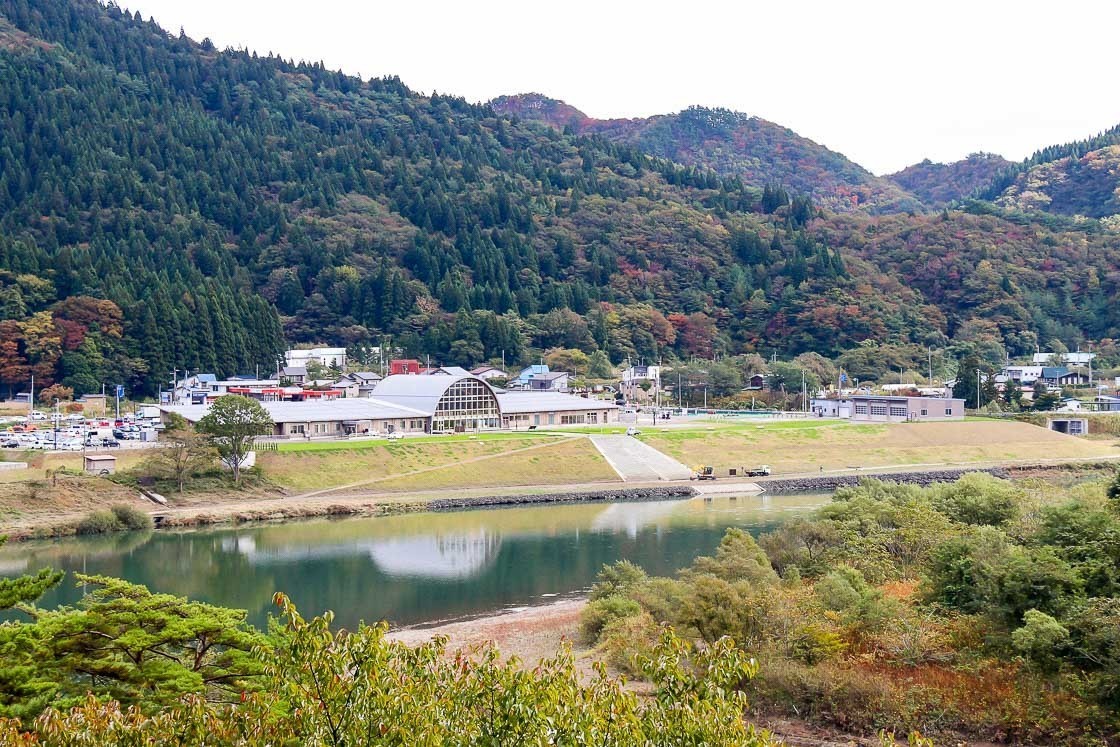
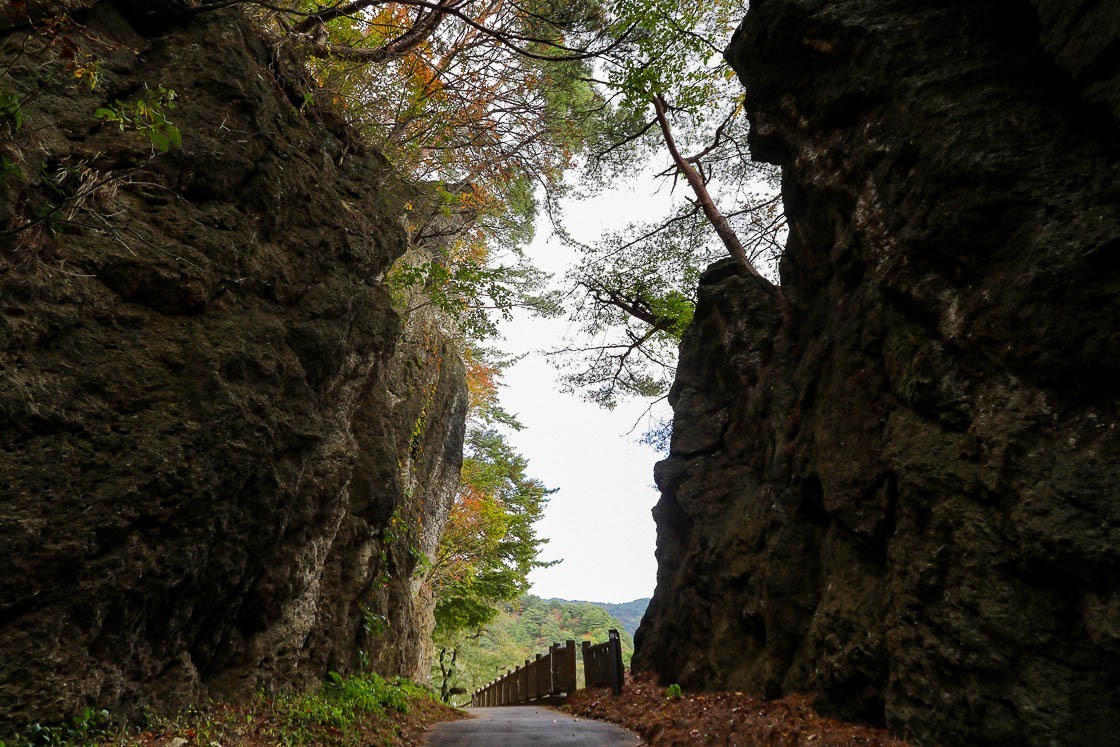
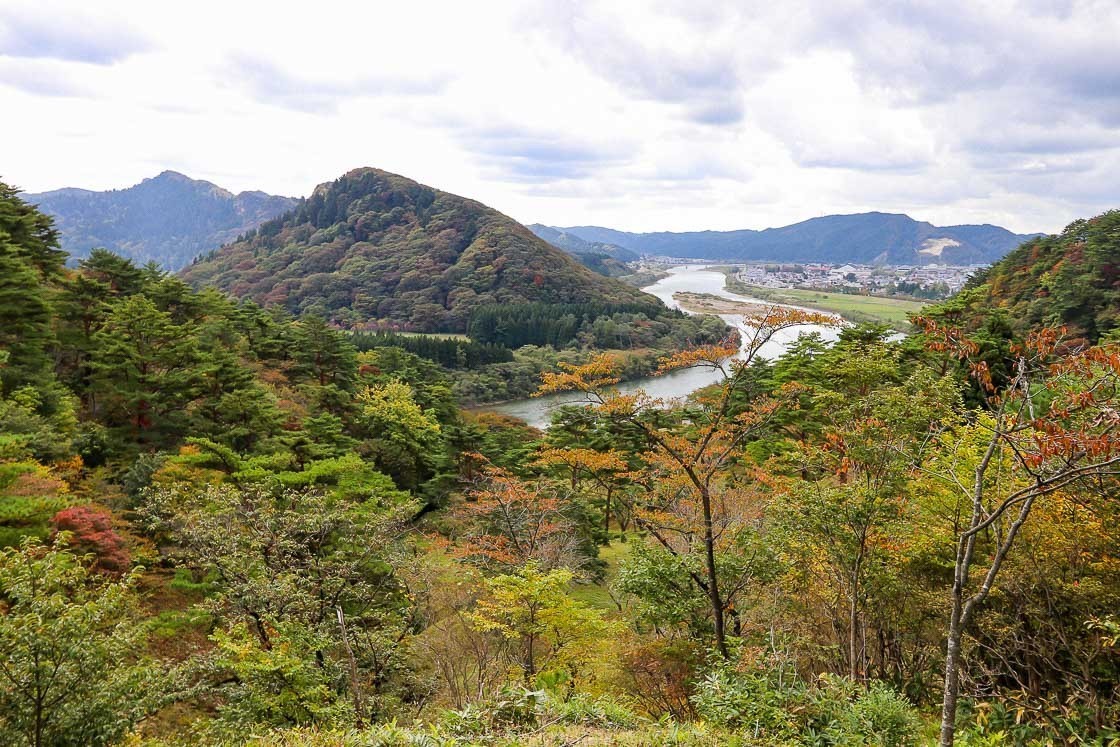
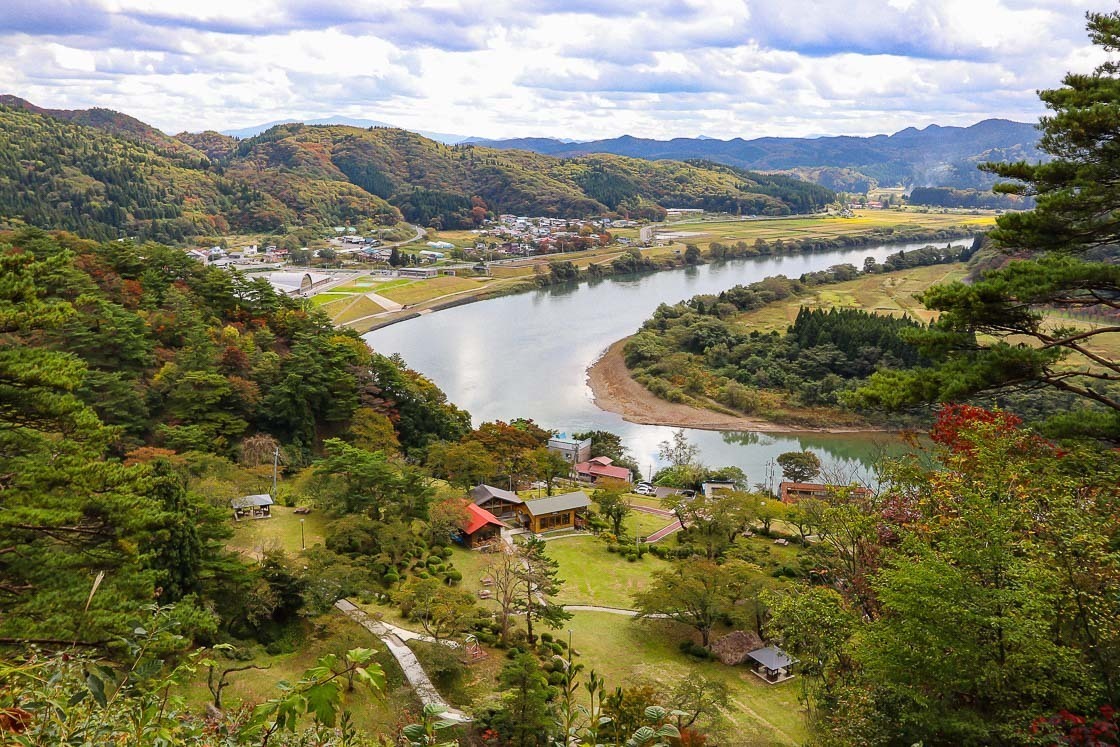
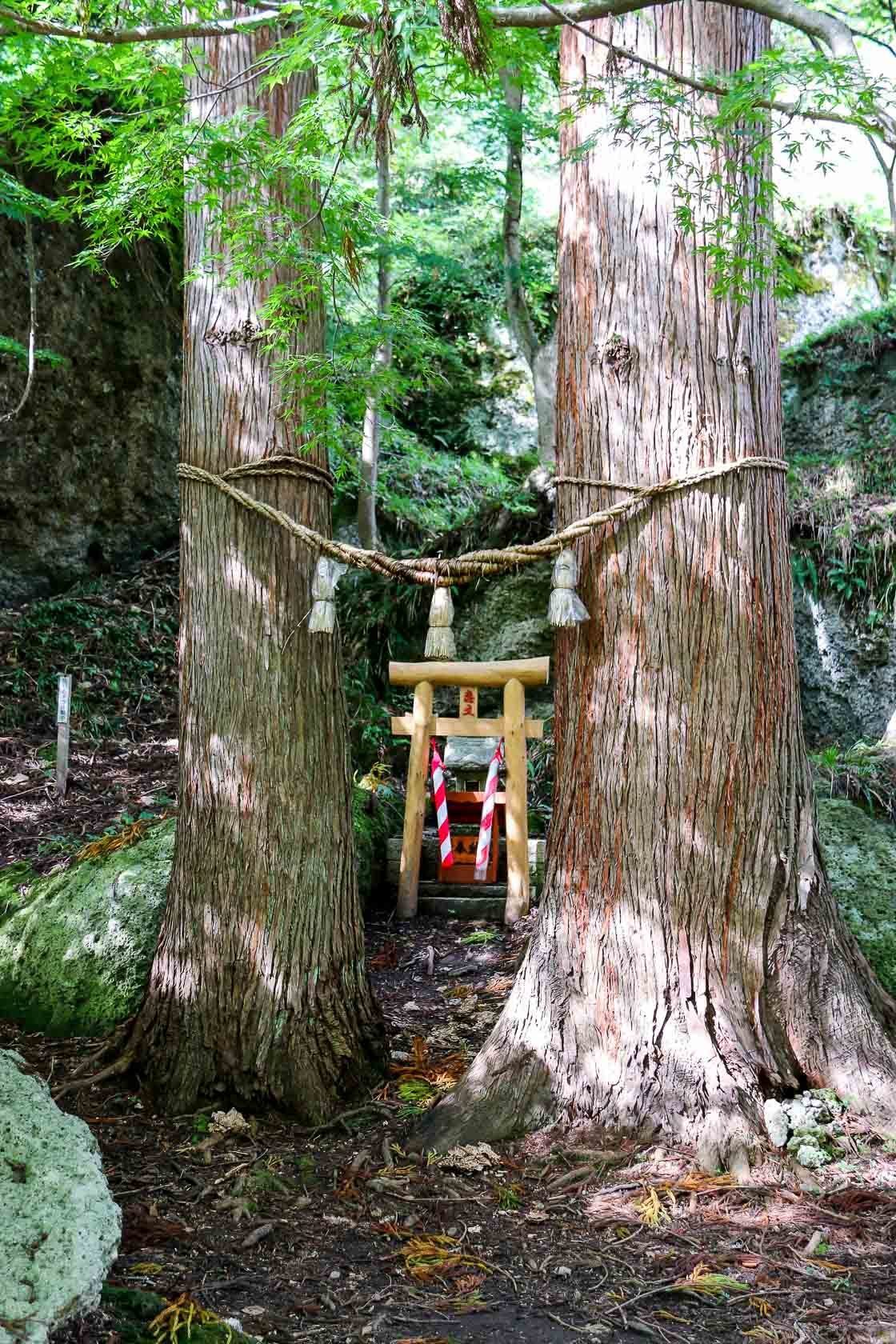
I spent about an hour at Kimimachizaka Park before heading back to the Futatsui Michi-no-eki for a lunch break. There were plenty of choices for lunch from either the restaurant or one of the food stalls at the rest stop. After filling my belly, it was time for a canoeing experience down the Yoneshiro River.
Canoeing isn't an activity that comes to mind in Akita, but this off-the-beaten-track activity was too good an opportunity to miss. The canoes were all handmade by the local craftsmen, which was very impressive! It wasn't long before introductions were underway, and I was ready to canoe a few kilometers downstream. As we canoed down the river, my guide pointed out the birds and the landscape around us. The relaxing cruise downstream provided opportunities to learn about the region as well as for conversation with the locals.
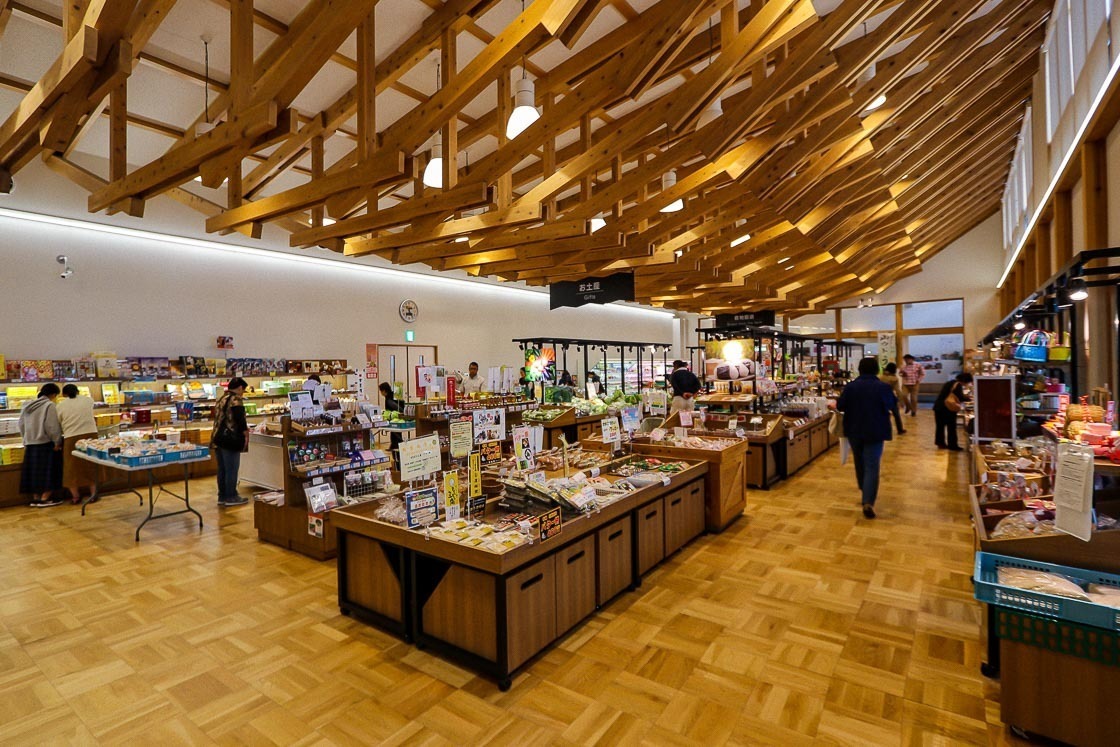
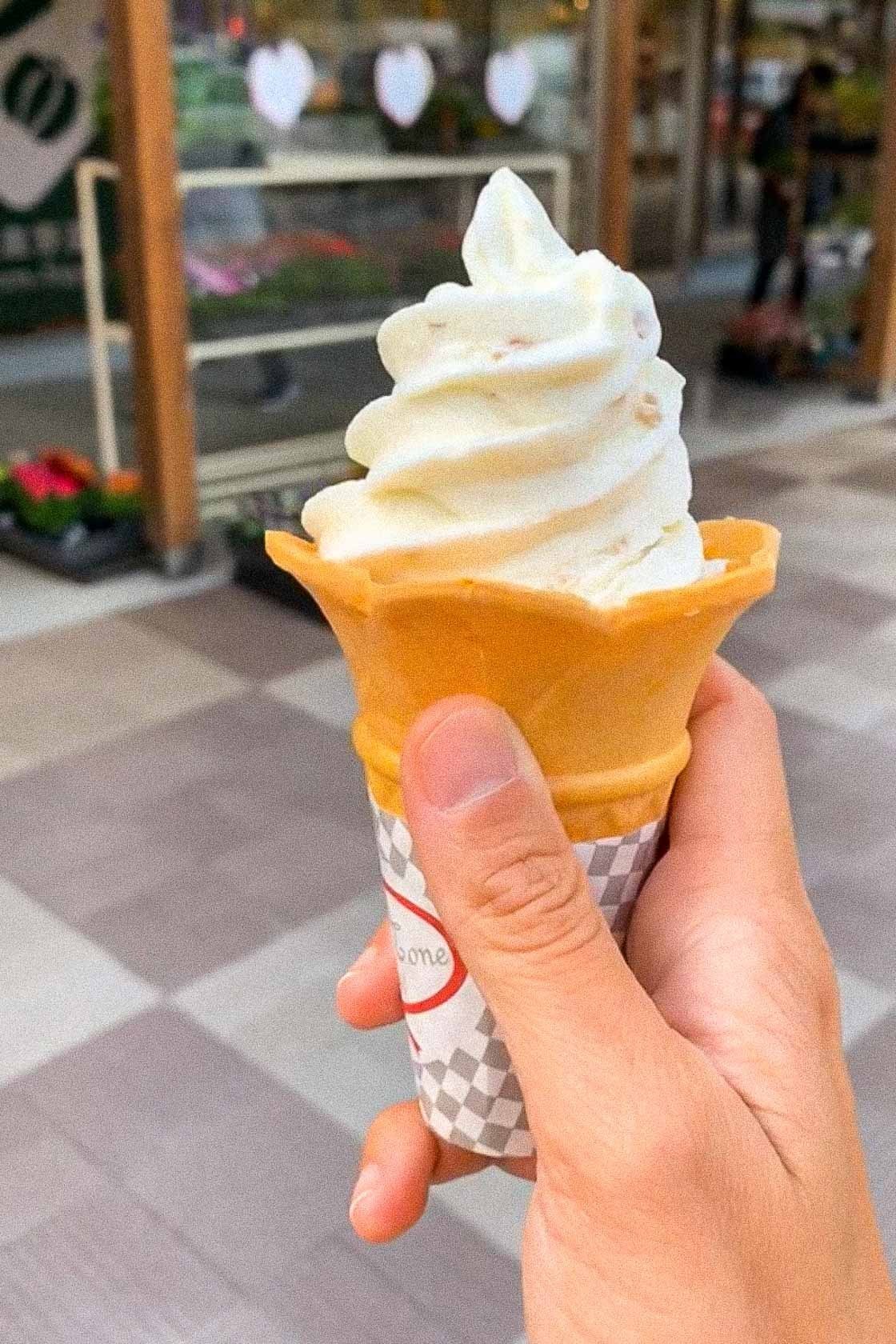
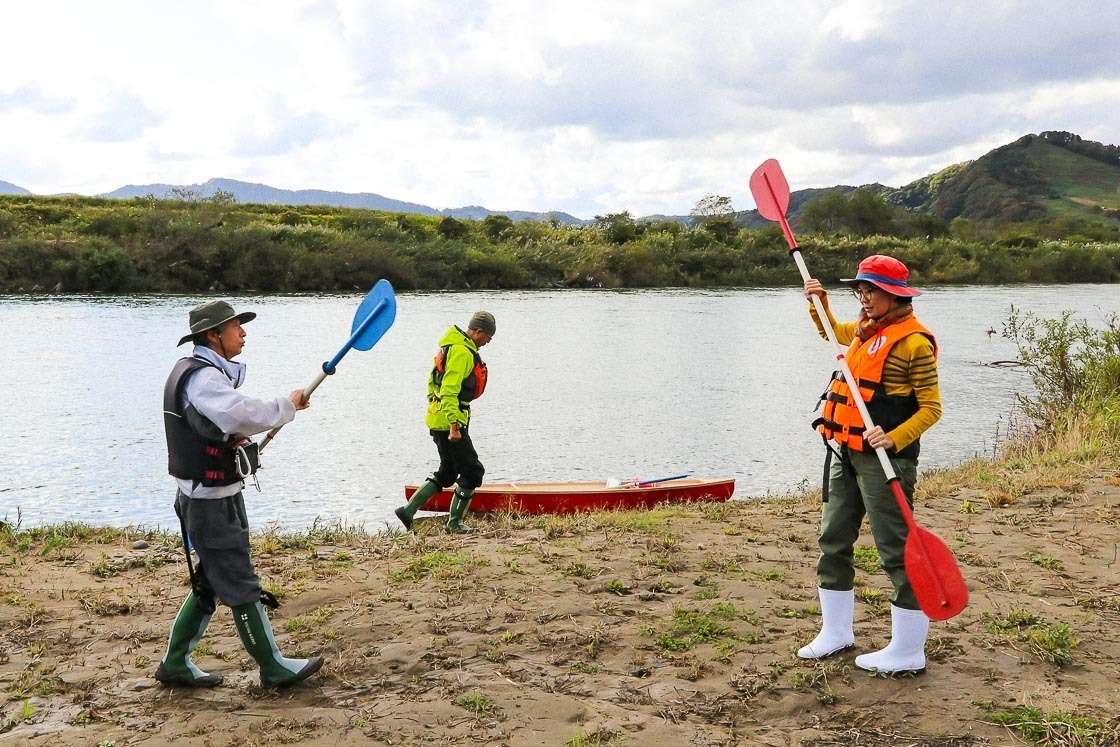
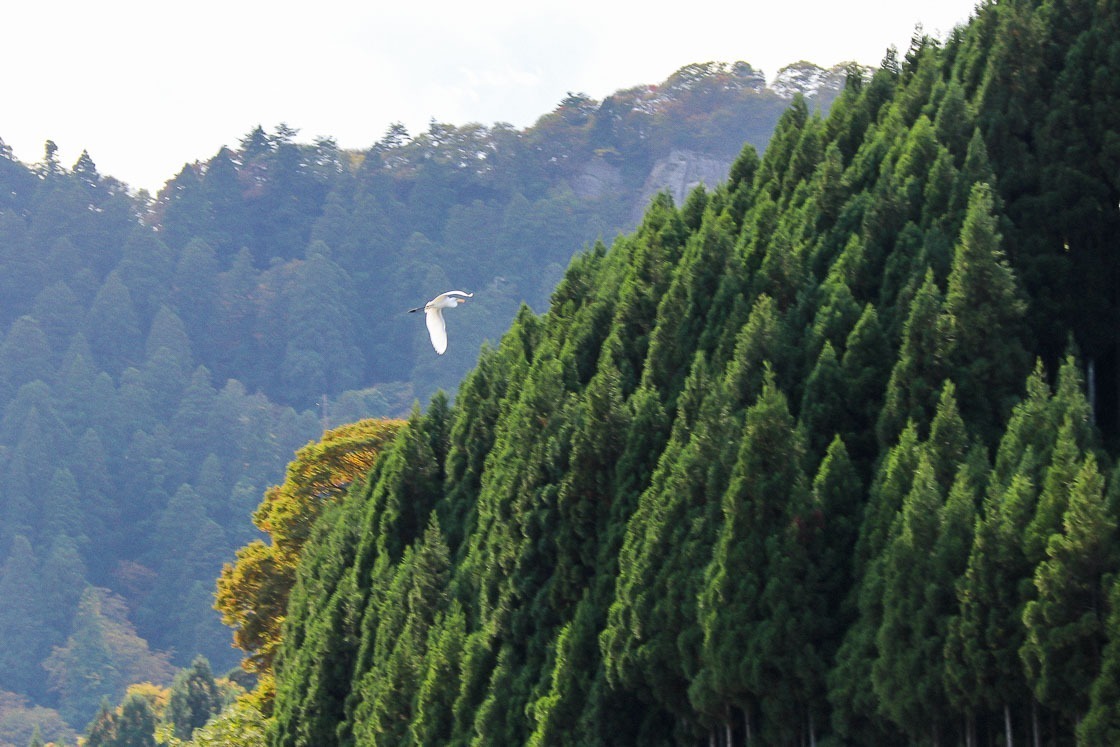
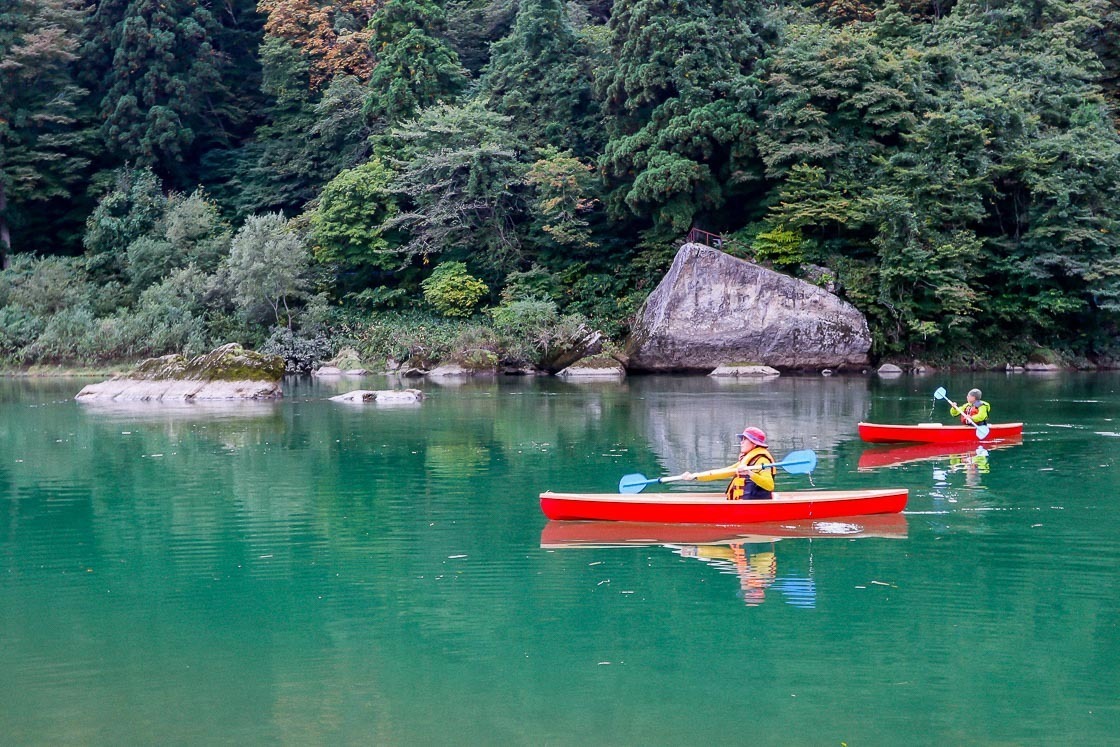
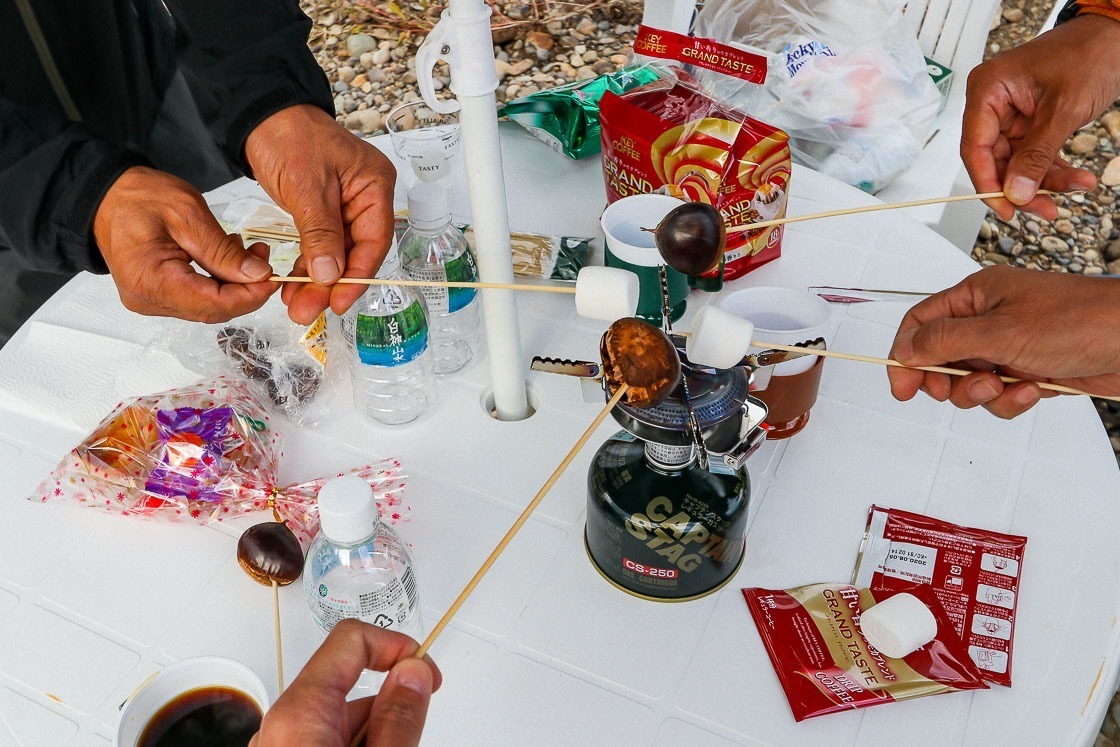
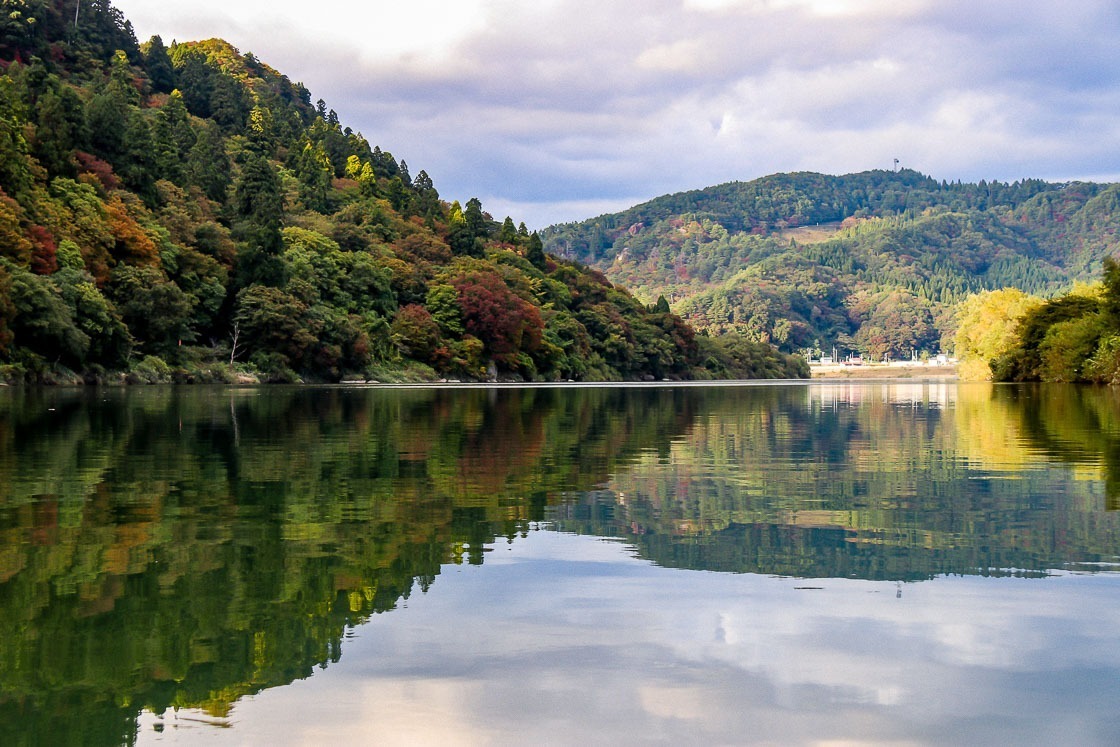
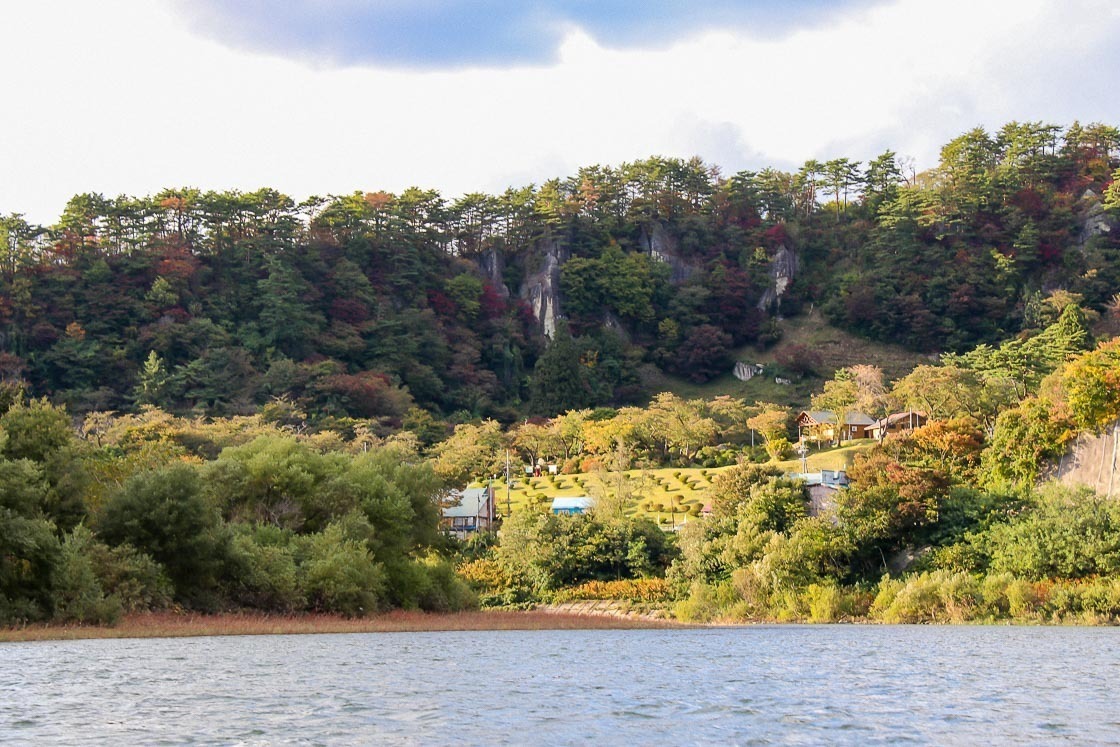
After canoeing, I got off my sea legs and drove for about an hour to Hotel Yutoria Fujisato, my accommodation for the night. But before that, I made a stop at the Shirakami Sanchi World Heritage Conservation Center (Fujisato), a stone's throw from my accommodation for the night, to learn more about the Shirakami Sanchi region and where I would be over the next two days. The conservation center in the town of Fujisato offers multilingual information about the history, heritage and habitat of the region.
Shirakami Sanchi is a vast mountainous region that straddles both Akita and Aomori prefectures. Within that mountainous region is a virgin Japanese beech forest that remains untainted by humans and where the local flora and fauna thrive. In 1993, the region was designated a UNESCO World Natural Heritage Site, one of the first of this designation in Japan, and further steps have been taken to protect this precious natural environment.
Shirakami Sanchi is separated into two zones: the pristine inner core zone in the heart of the region, which makes up the preserved UNESCO World Natural Heritage Site, and the larger outer buffer zone where the average visitor can enter. These two areas together with the surrounding areas form a larger conservation area. The eco-system found in the forest was also explained in detail at the conservation center, and I found that particularly interesting.
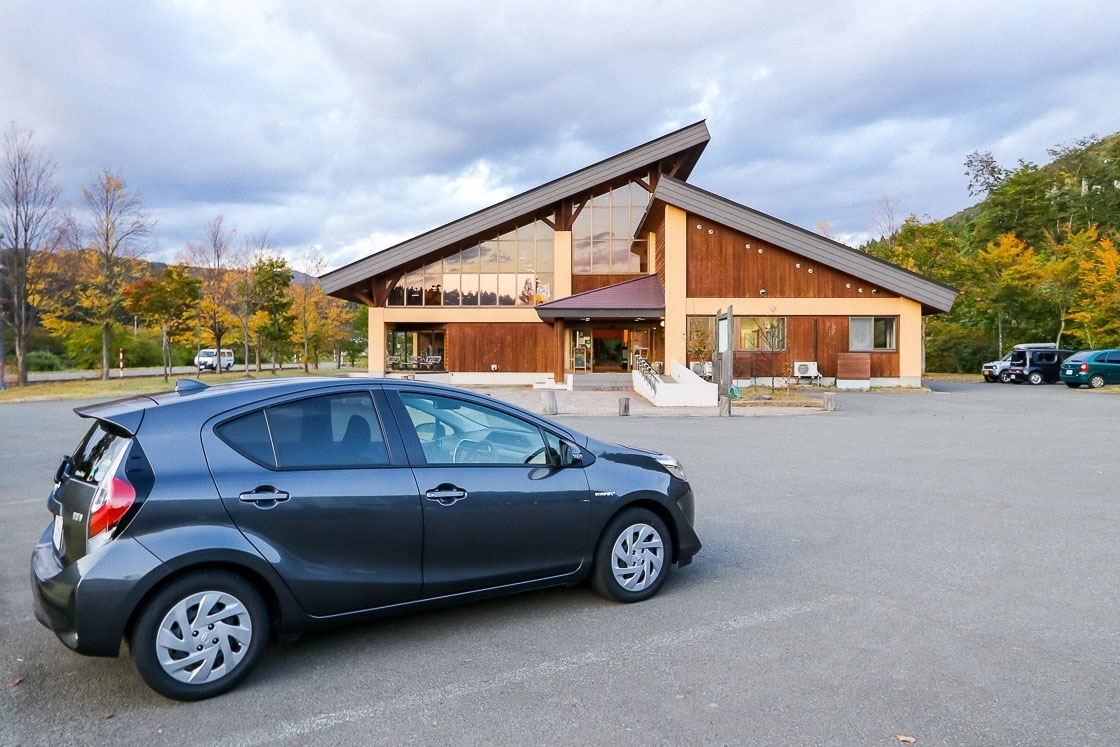
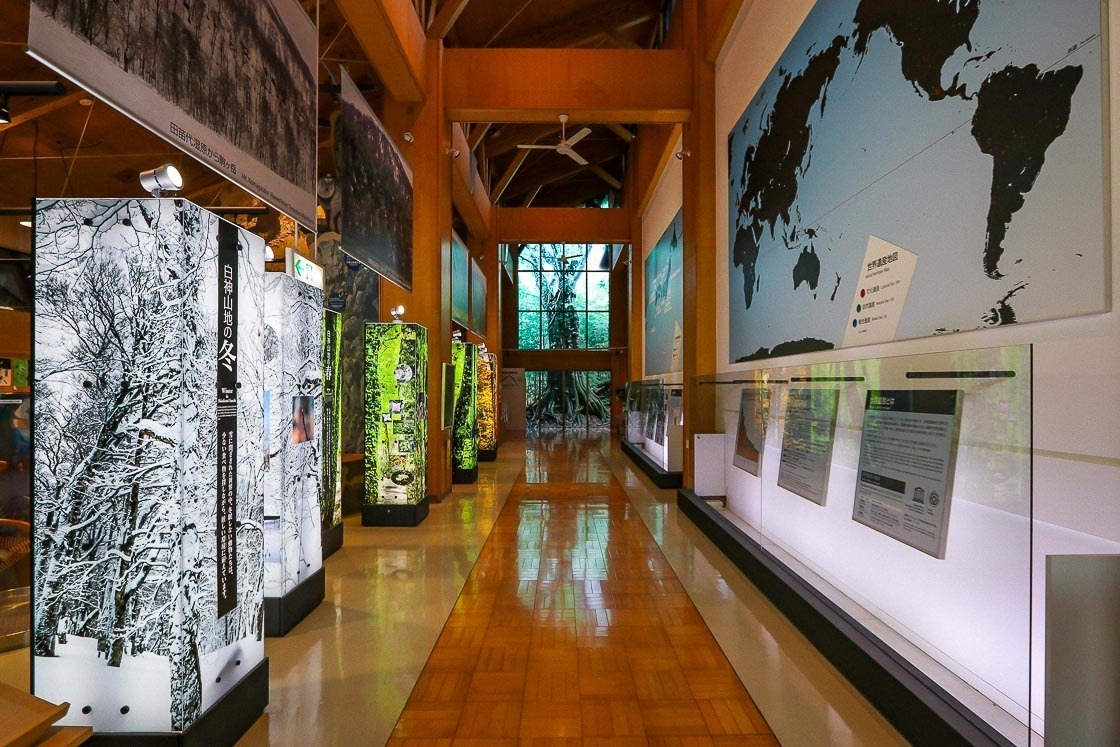
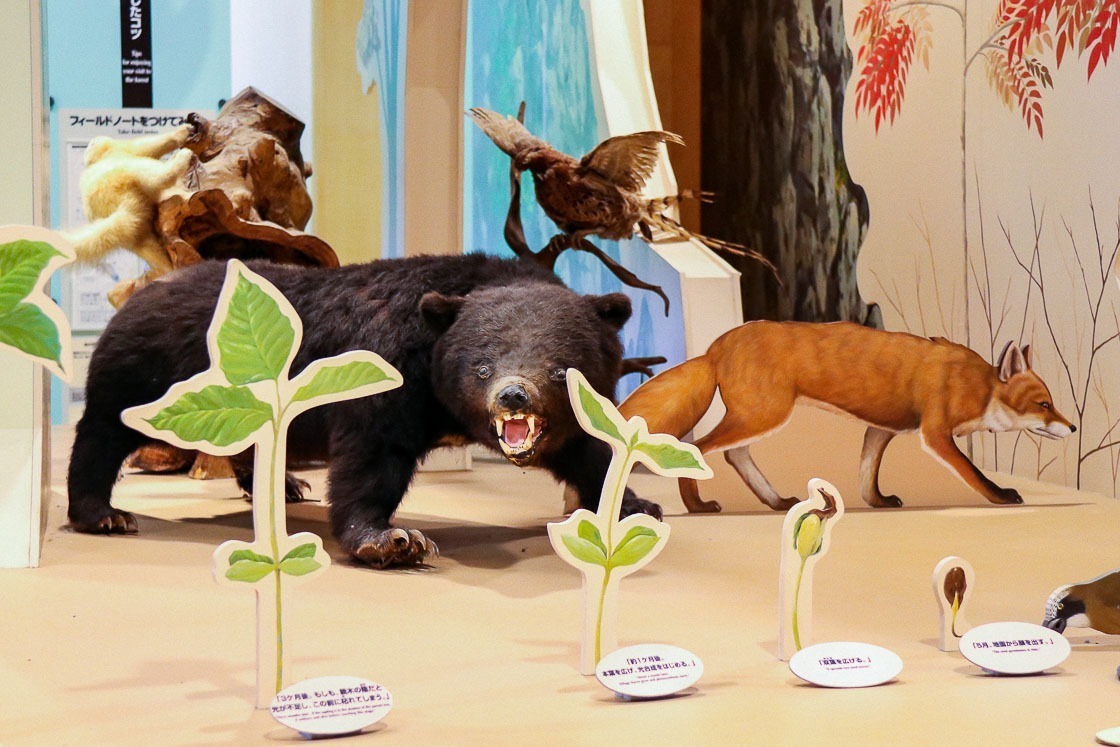
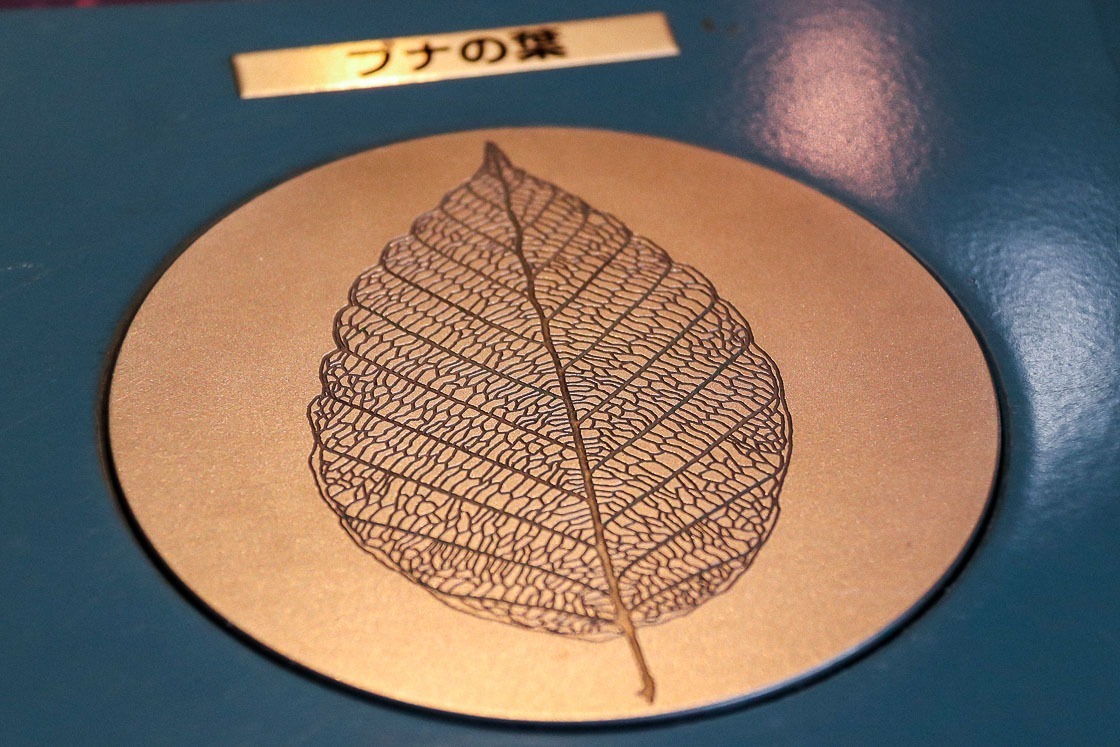
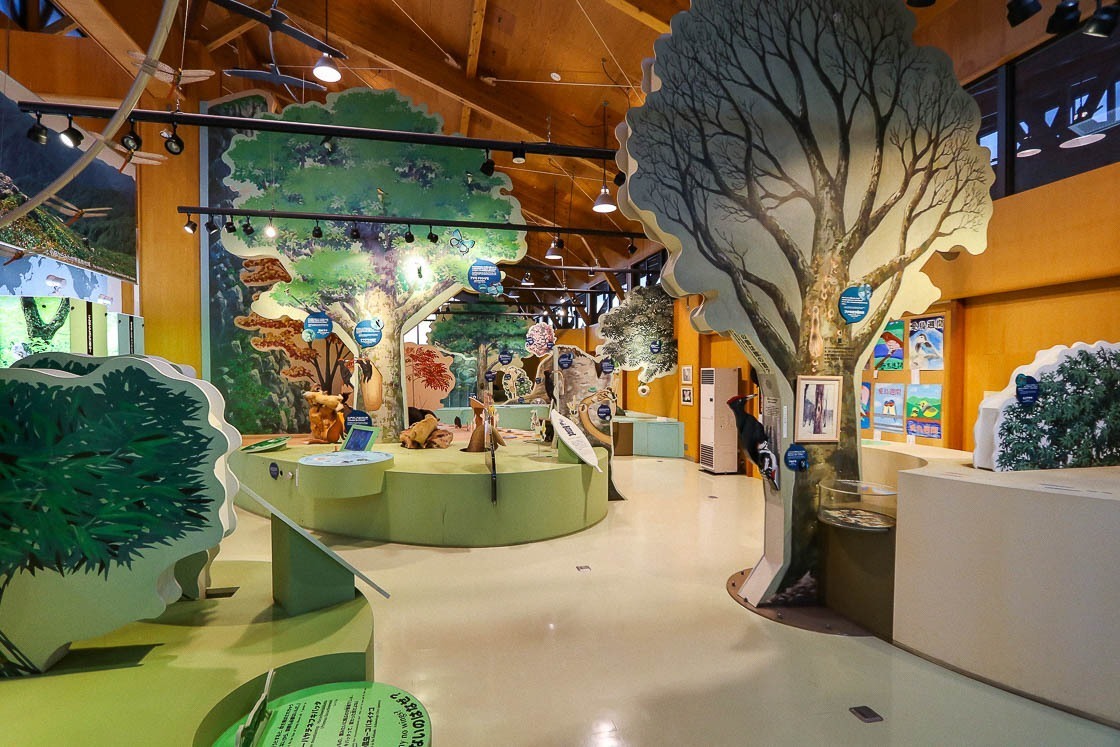
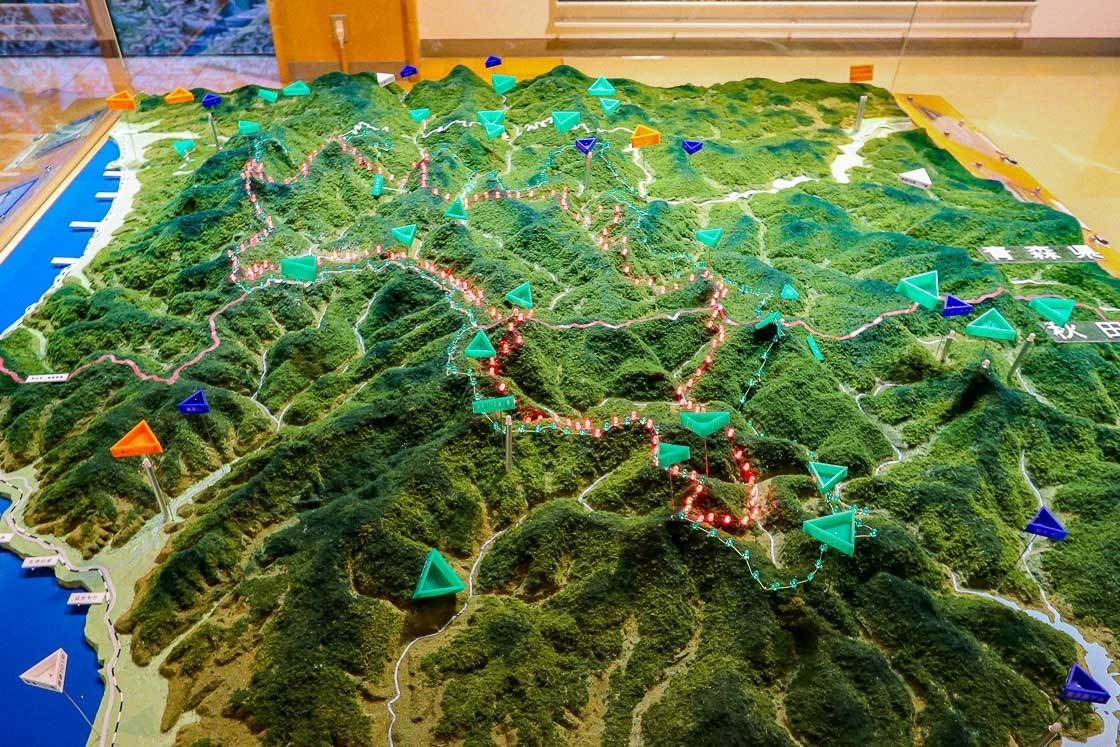
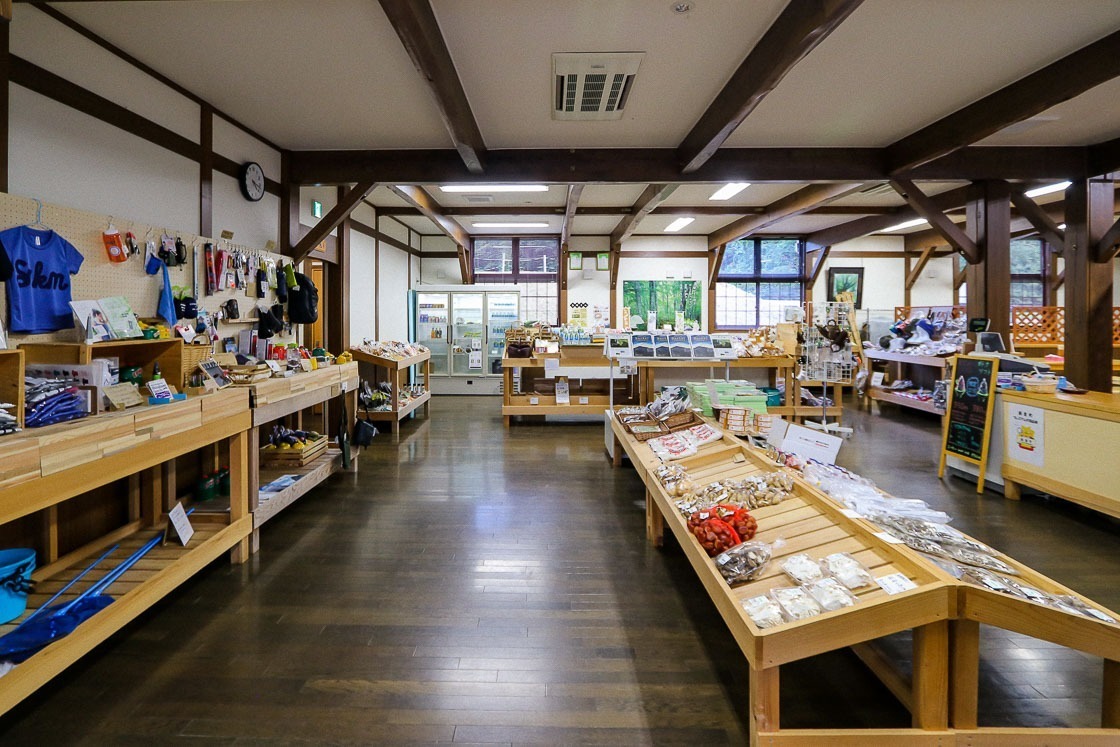
Day two
I started my morning back at the World Heritage Center, a few minutes from my accommodation. The plan for today was to go on a hike before ending the day in Noshiro City where I would do a bit of sightseeing.
The Dakedai beech forest was to be my first destination, but the trail into the forest was impassable due to a typhoon that passed through a couple of days before my trip. However, I managed to catch some awesome views of the valley leading to Dakedai before I had to turn back.
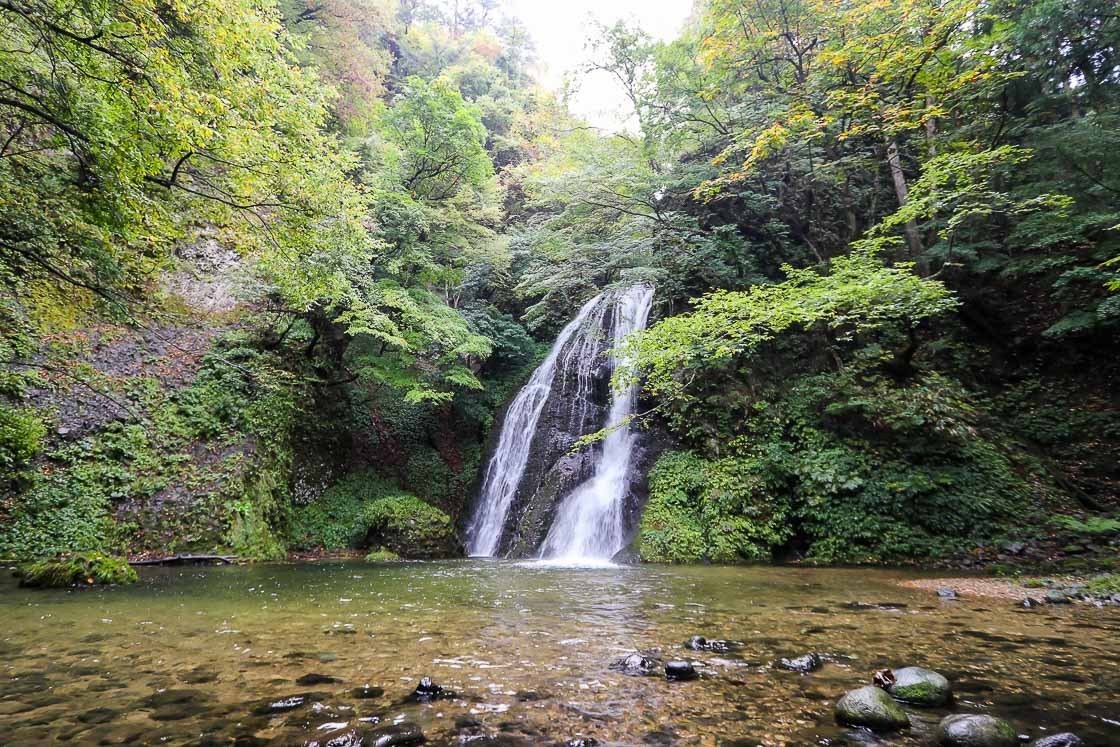
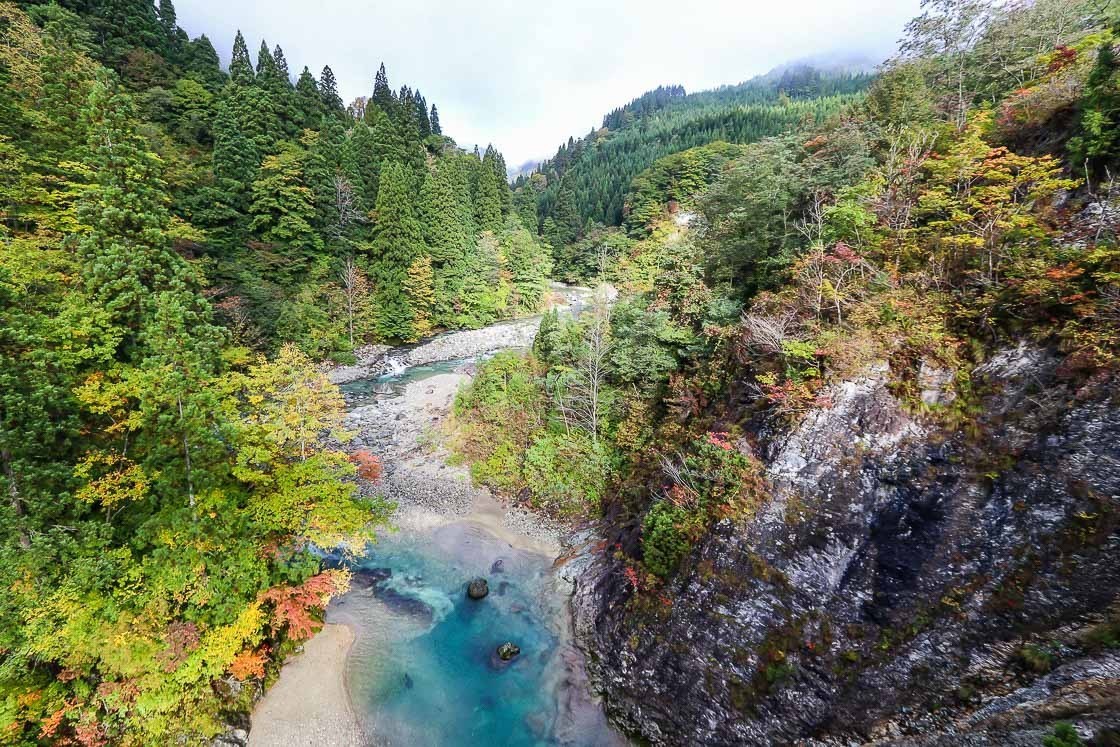
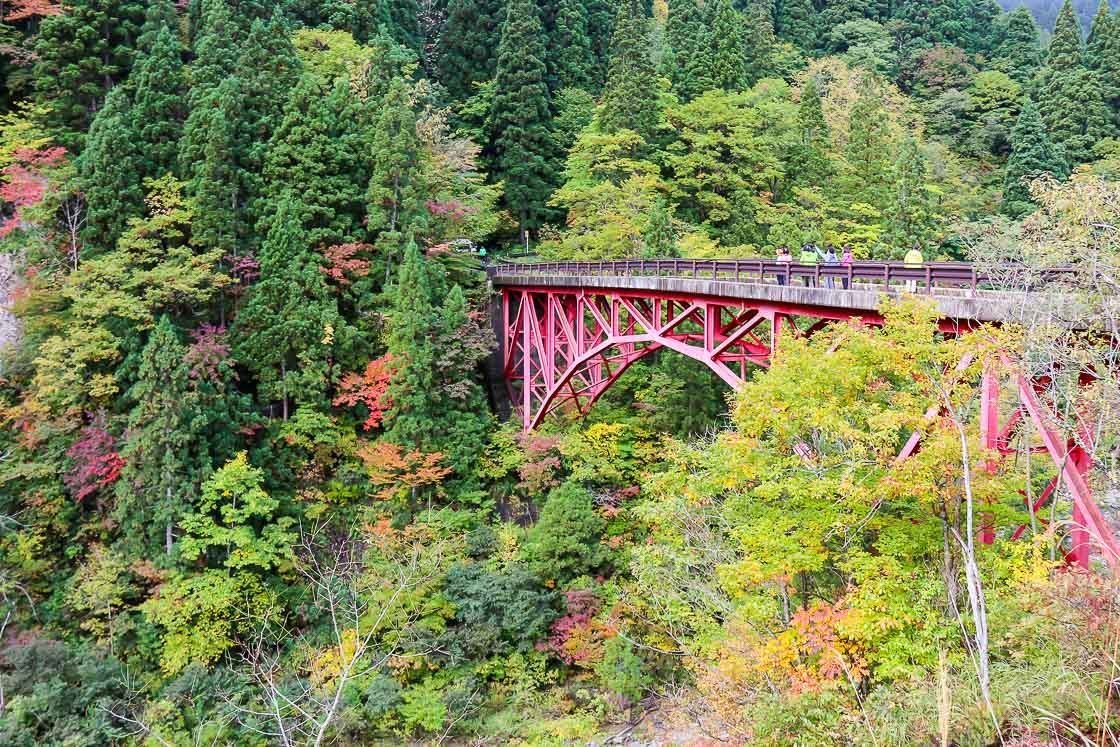
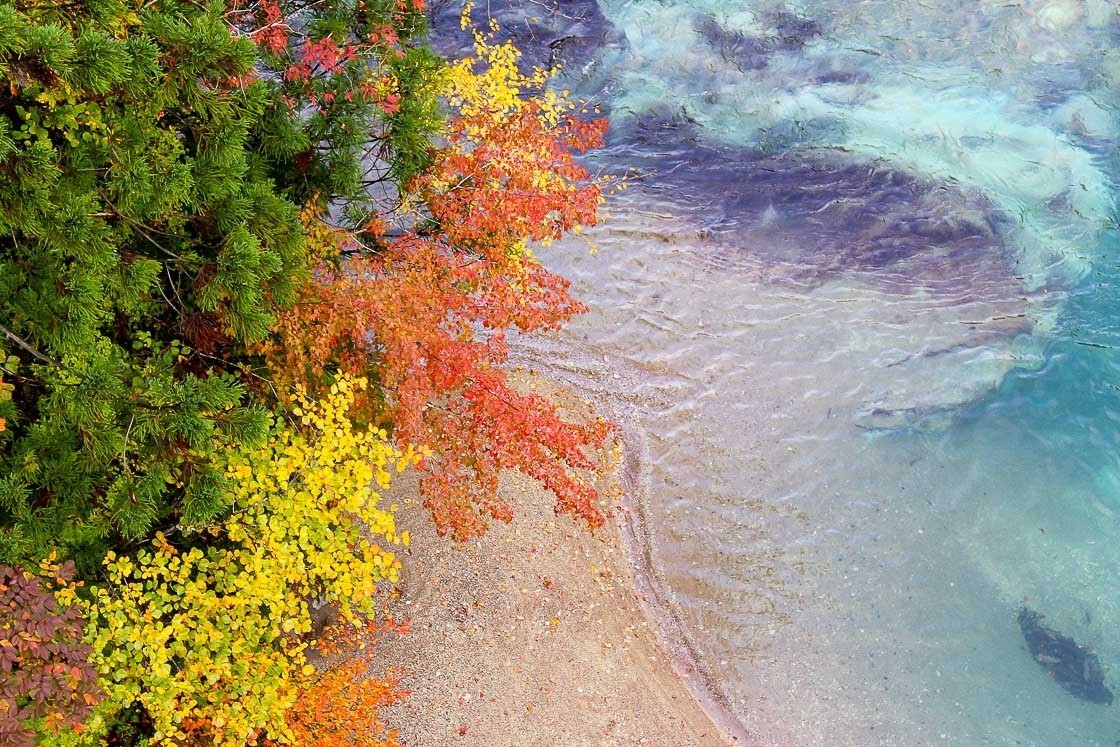
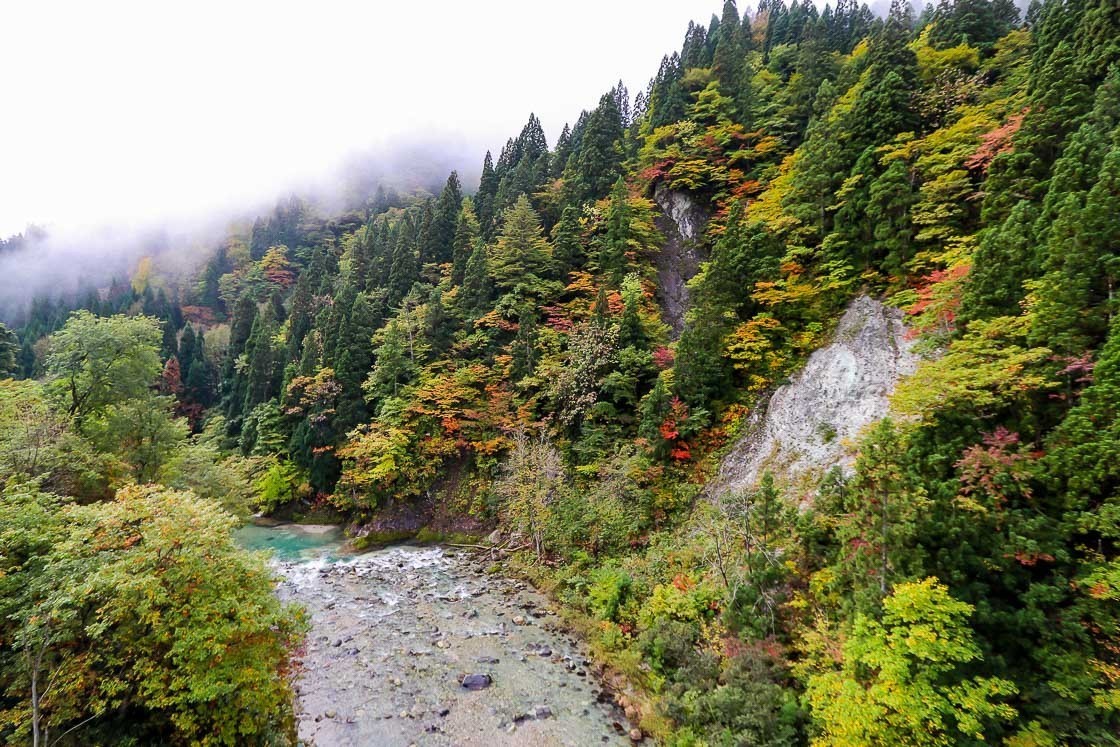
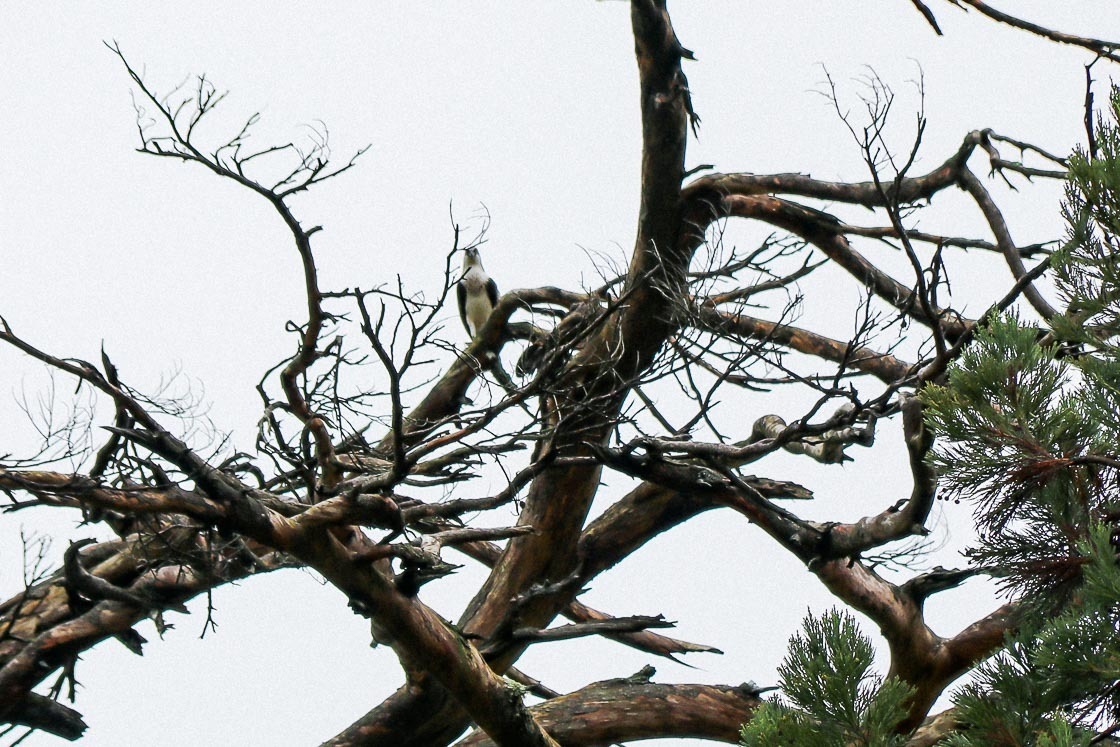
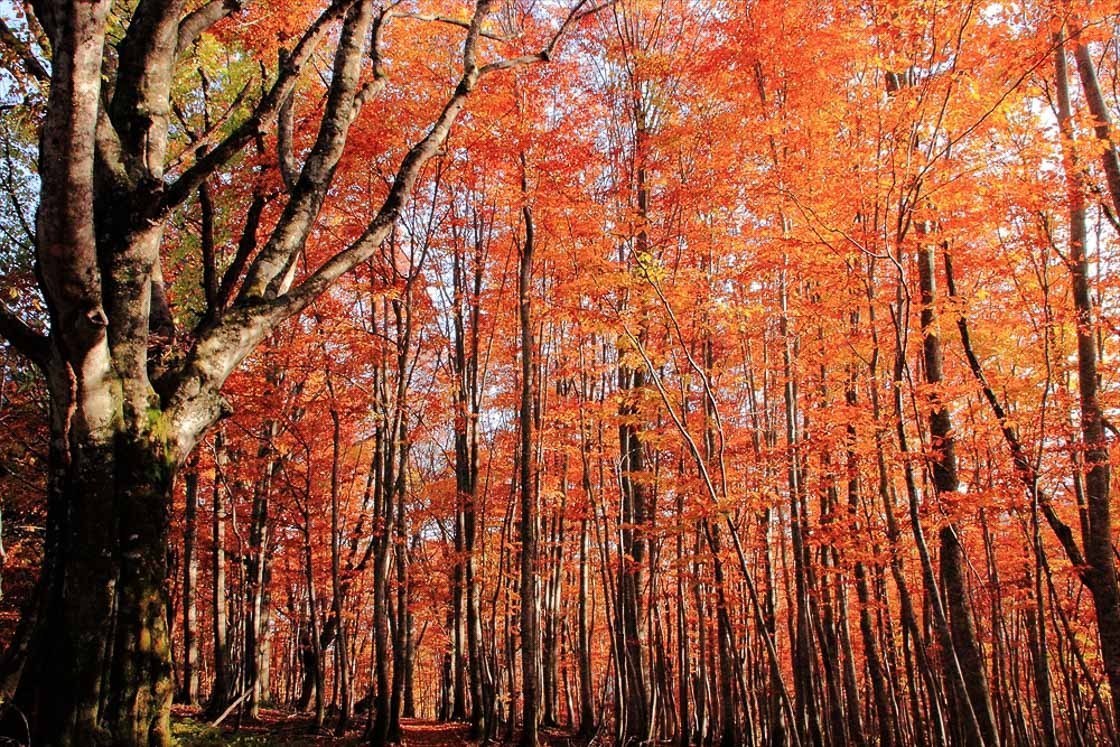
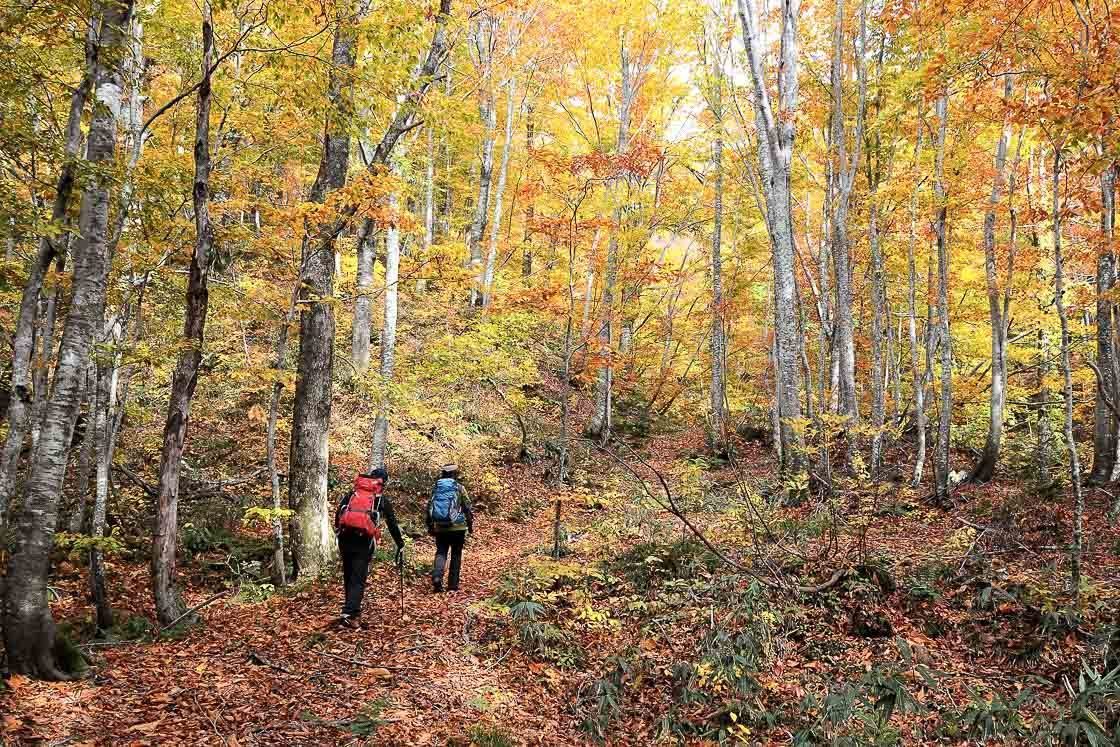
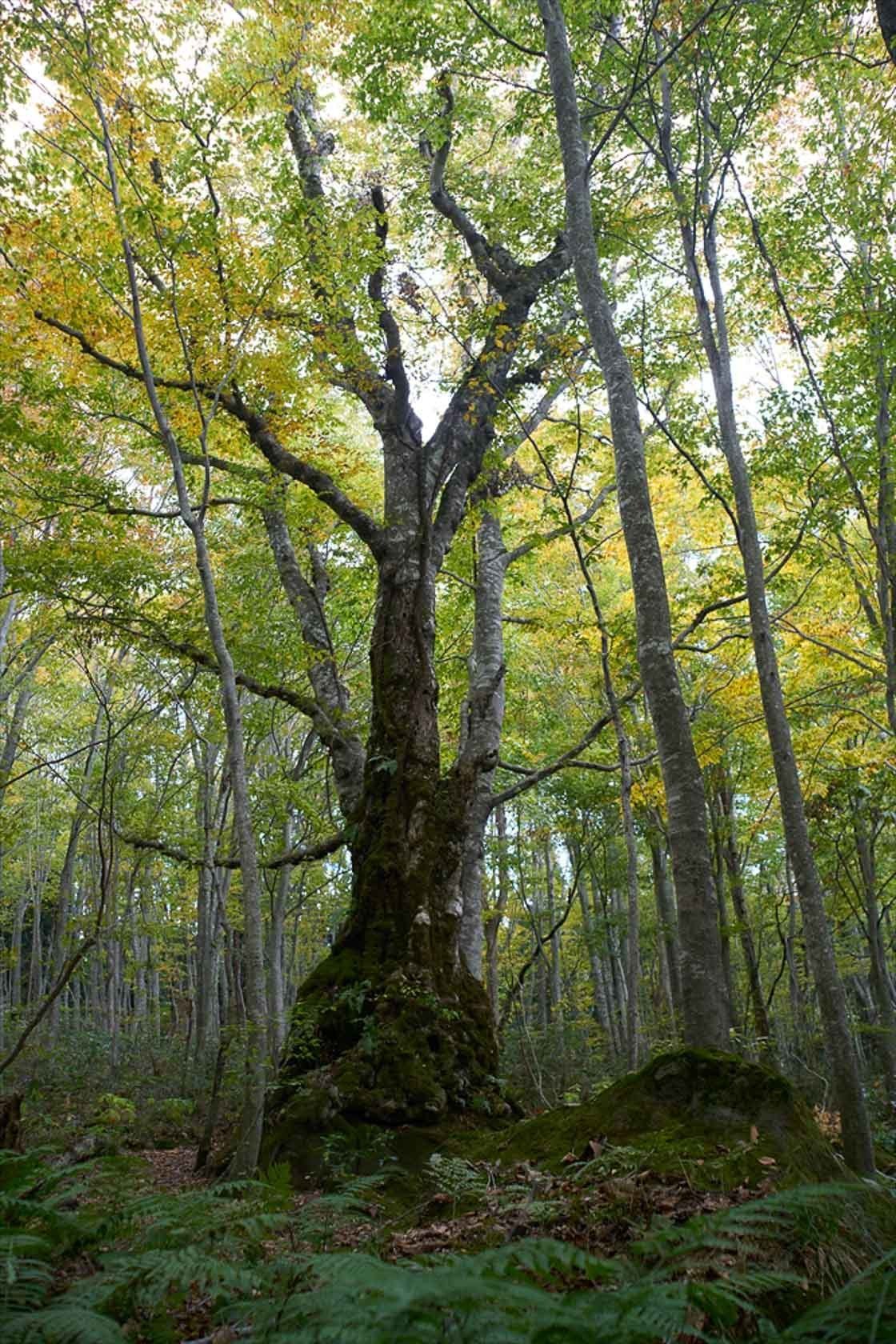
Undeterred, I made a change of plans and headed west for Mount Futatsumori. The plan was to pick up some lunch, drive to Mount Futatsumori where the road ends, and then hike up to the peak.
It is pretty rare to reach the end of a paved road, but the history here was that the villagers living in the surrounding areas decided that protecting the forest and nature was more important. Thus, the project to connect the towns on the other side of the mountain was shelved midway. Respect for nature is a big thing in the Akita Shirakami area. The very same nature that provides fresh water and clean air, which are important for life, must be protected and preserved to benefit the generations to come.
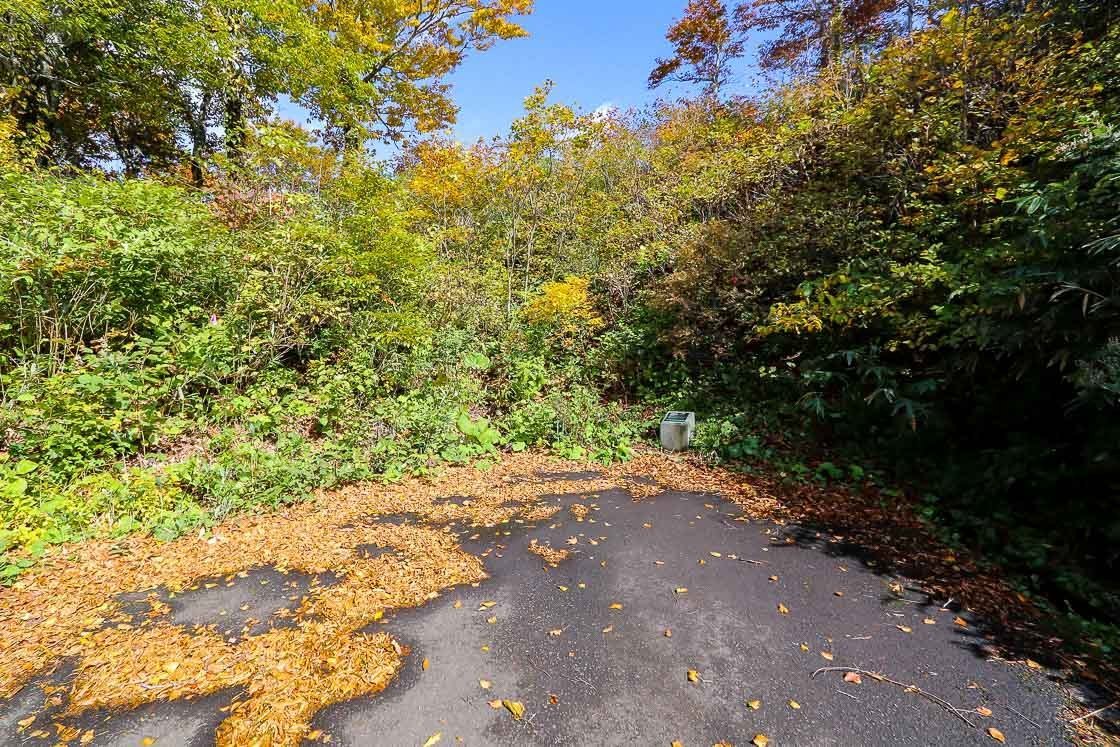
The hiking trail from the parking area where the road ends to the peak of Mount Futatsumori is uphill for most of the way. The hike to the top took about two hours one way at a leisurely pace with frequent breaks, but can be done in an hour. The trail affords a bird's eye view of the core zone in many areas, and as I was there in the autumn, it was a beautiful sight seeing the fall colors across the mountain. The views I saw during my hike were very impressive, and I can only assume how much more amazing it woiuld be in the core zone. Mount Futatsumori lies on the prefecture border of Akita and Aomori, and it was very likely that I was in two places at the same time while hiking up the mountain!
I had an English-speaking guide, Yonemori-san, accompany me on this hike, and she introduced the area as well as the local flora we saw along the way. It was definitely more educational and informative than if I would have hiked alone.
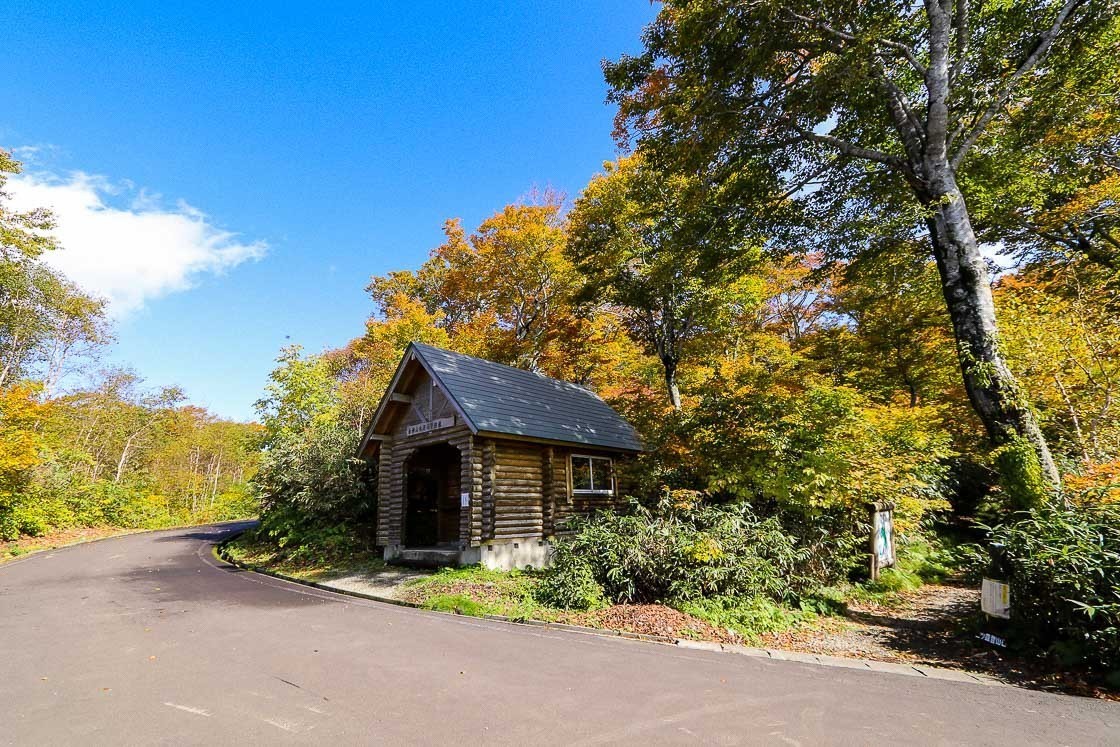
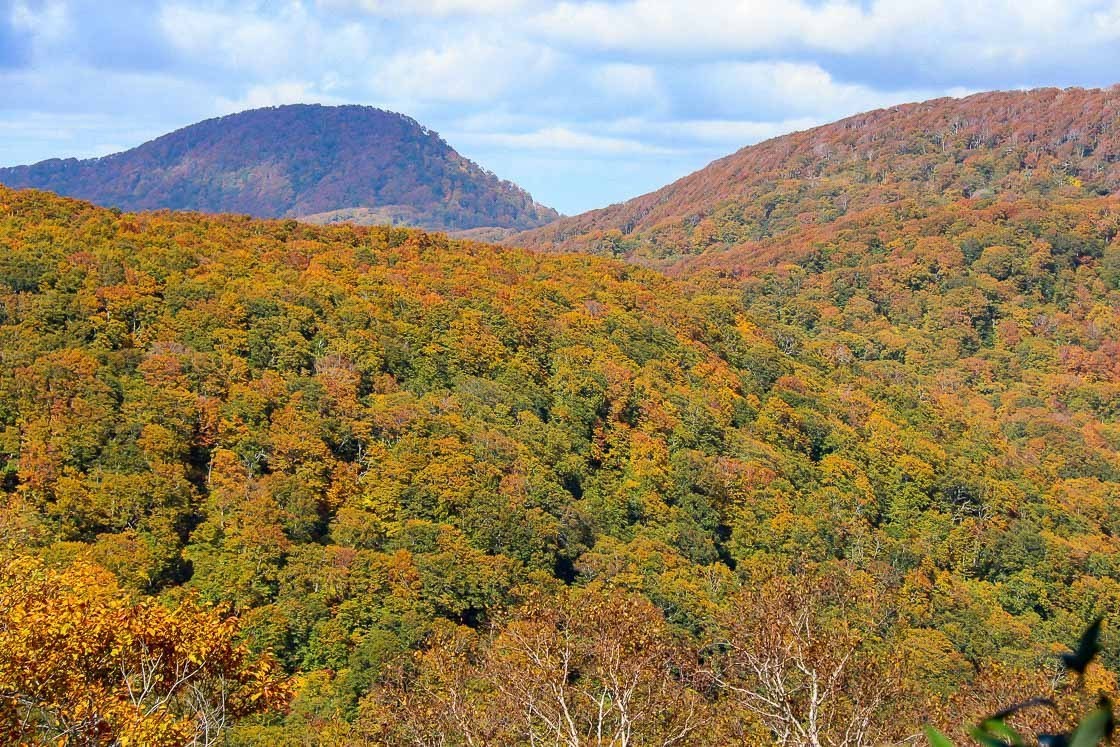
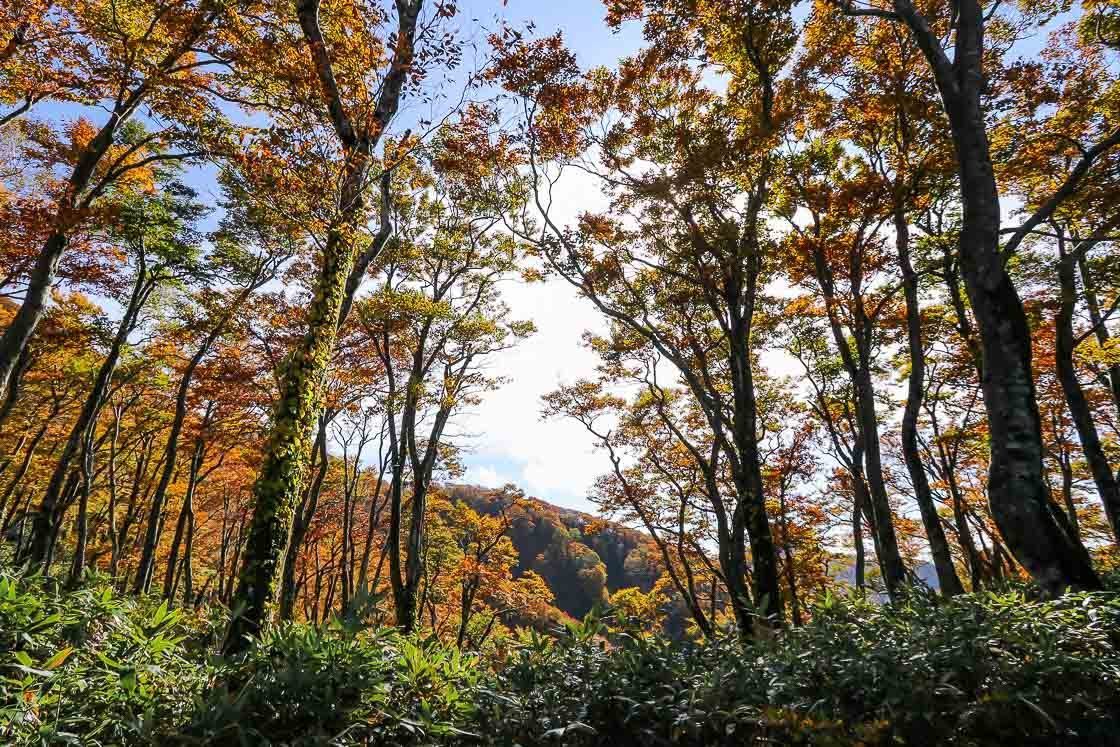
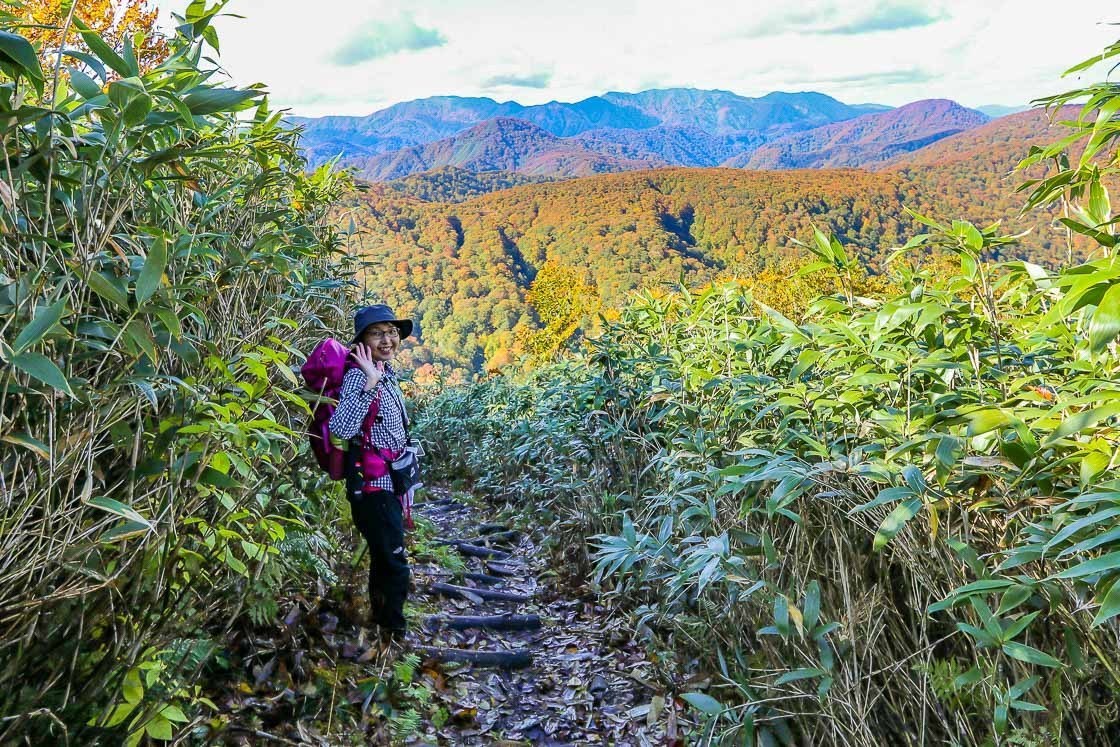
Heading down the mountain was faster than going up, and I was soon back where I started. The drive to Noshiro City from Mount Futatsumori took no more than 1.5 hours, and I returned my rental car in the city before going sightseeing.
My first stop in the city was Kaneyu, a former ryotei restaurant which is now a tangible cultural property. Meals are available and requires advance reservations. A guided tour of Kaneyu is recommended to fully appreciate the finer details of the exquisite design and Japanese tradition. English-speaking guides are available and making an advance reservation is advisable. I went for a guided tour and also had the opportunity to wear a variation of a kimono during the tour. Let's just say that I did not waste any photo opportunities when I was all dressed up in a traditional setting, and my guide made it an incredibly fun time as well.
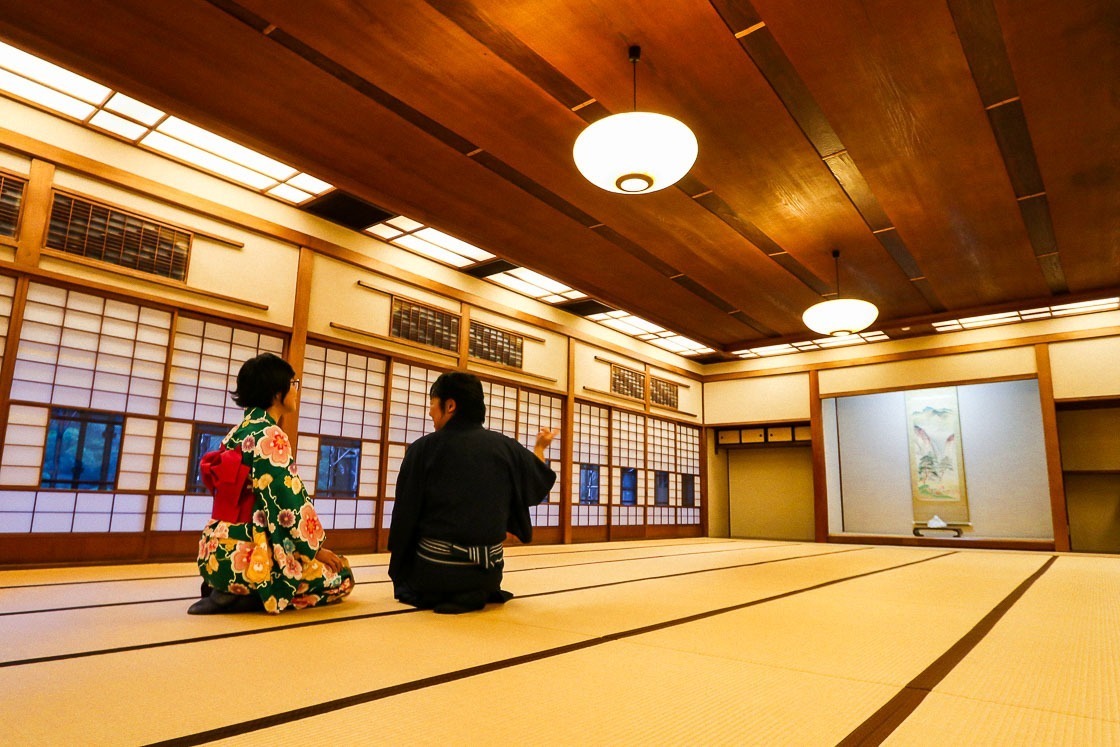
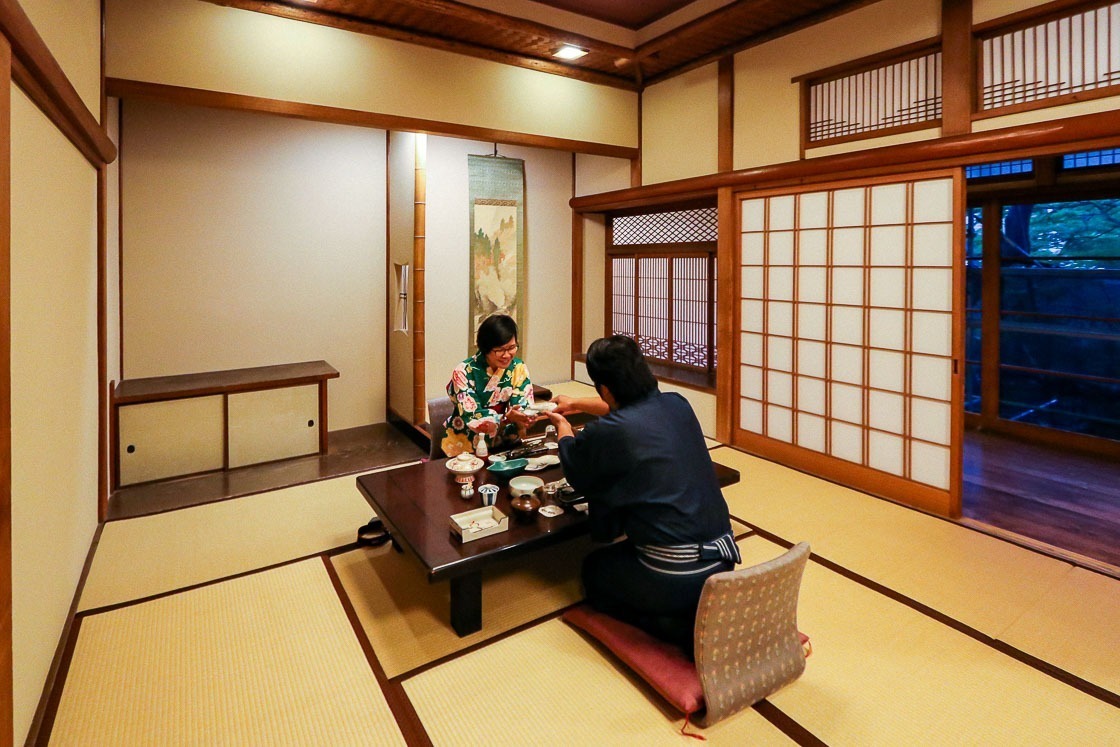
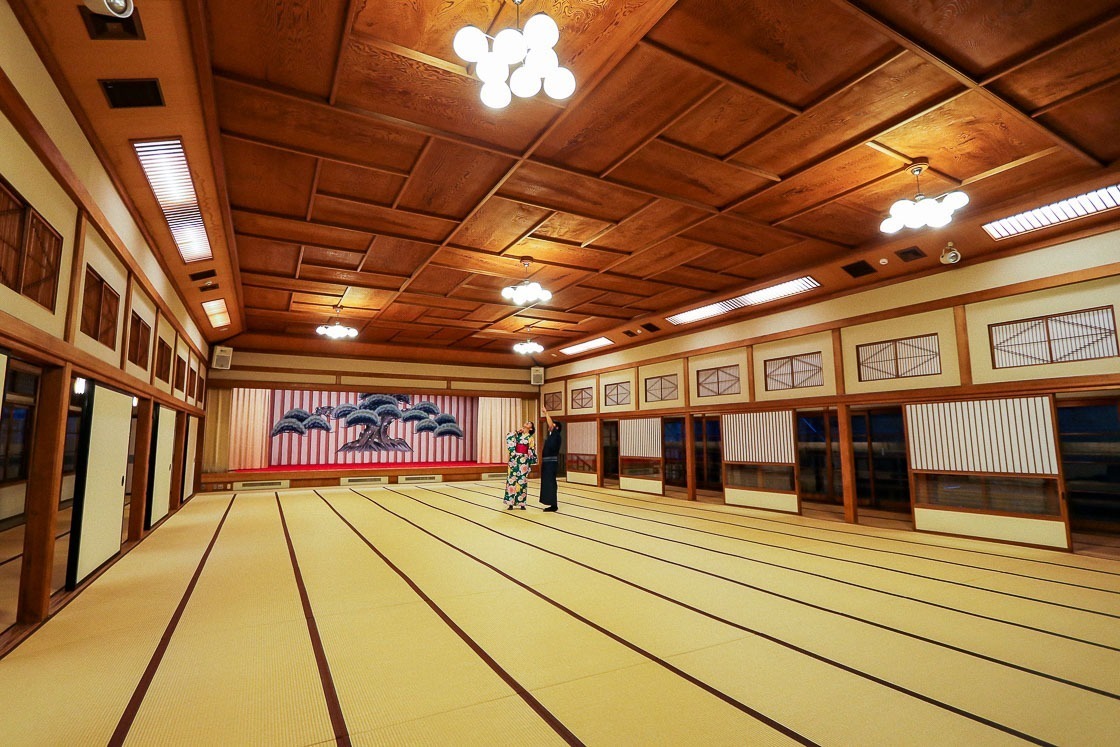
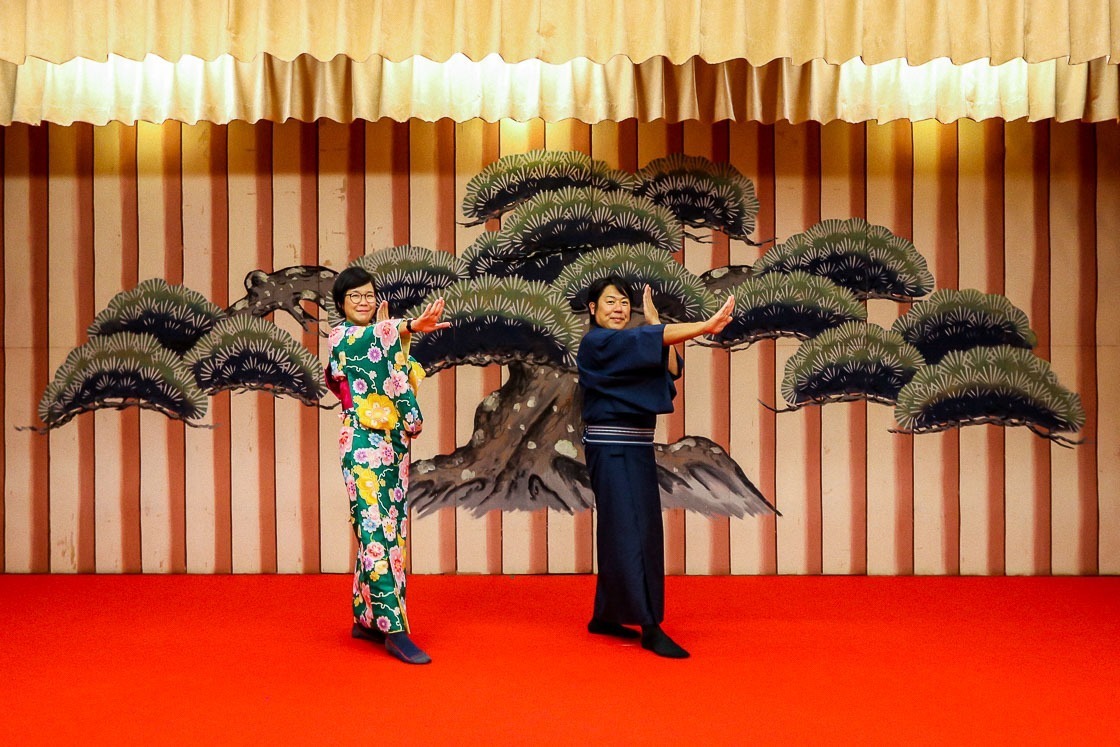
Next on my tour of Noshiro City was Tenyo Saketen, a shop that specializes in local Akita sake all selected by the owner. Tenyo carries sake that is not sold at the supermarket nor at generic liquor stores, and they are typically limited bottles. Judging by the steady stream of customers when I was there, it was clear that Tenyo was the place to get the good stuff.
The owner, Asano-san, is like a sake sommelier and can give sake recommendations based on the customer's preferences and the kind of food they plan on having. He introduced me to the local Noshiro sake labels, and gave me the lowdown and background about the breweries. It's not very often you get a sake shop owner who knows his labels so intimately, and that's when you know you're in very good hands.
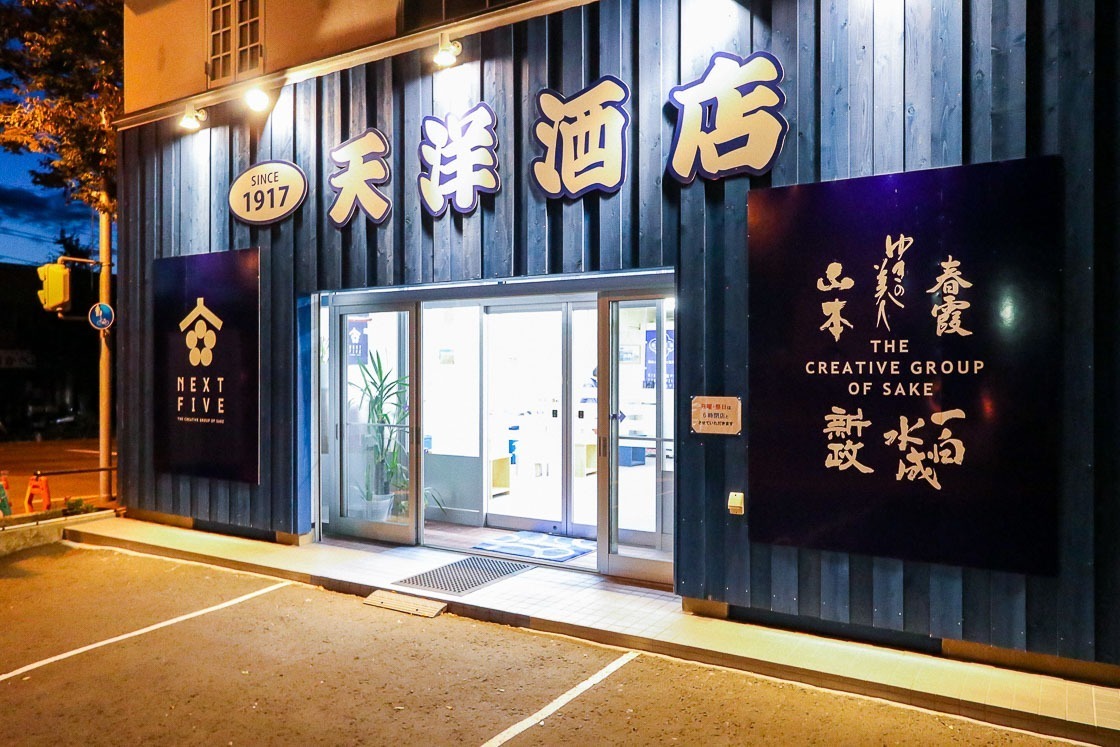
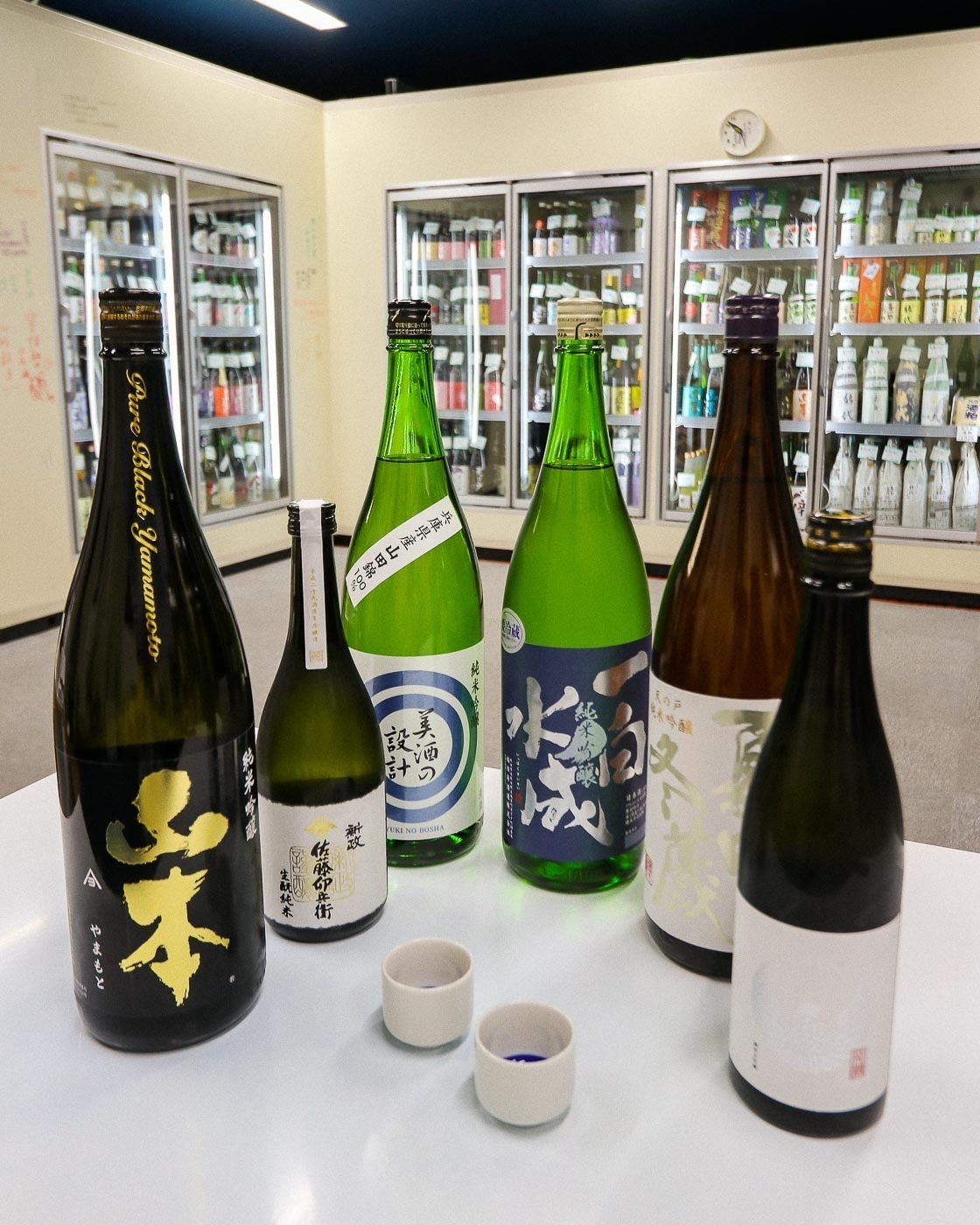
It was dark by the time I left Tenyo Saketen, and I walked down the main street towards a local izakaya, Shushokusaien Iki for dinner. An izakaya is a casual dining restaurant and a good place to sample local and regional cuisine. I also took the opportunity to sample some Noshiro sake with my meal. After dinner, I also visited a nearby restaurant/bar Tomarigi Hinata, which was recommended by the owner of Tenyo Saketen, to taste more local sake. I was very well taken care off and rolled back to my hotel content and satisfied.
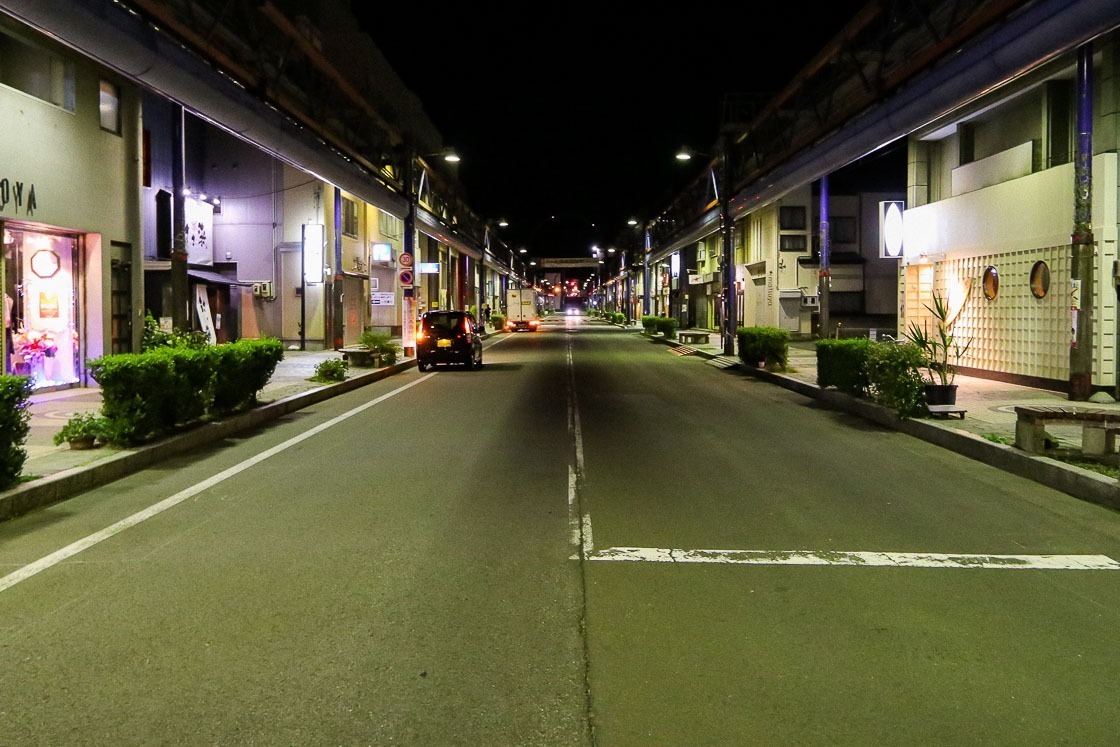
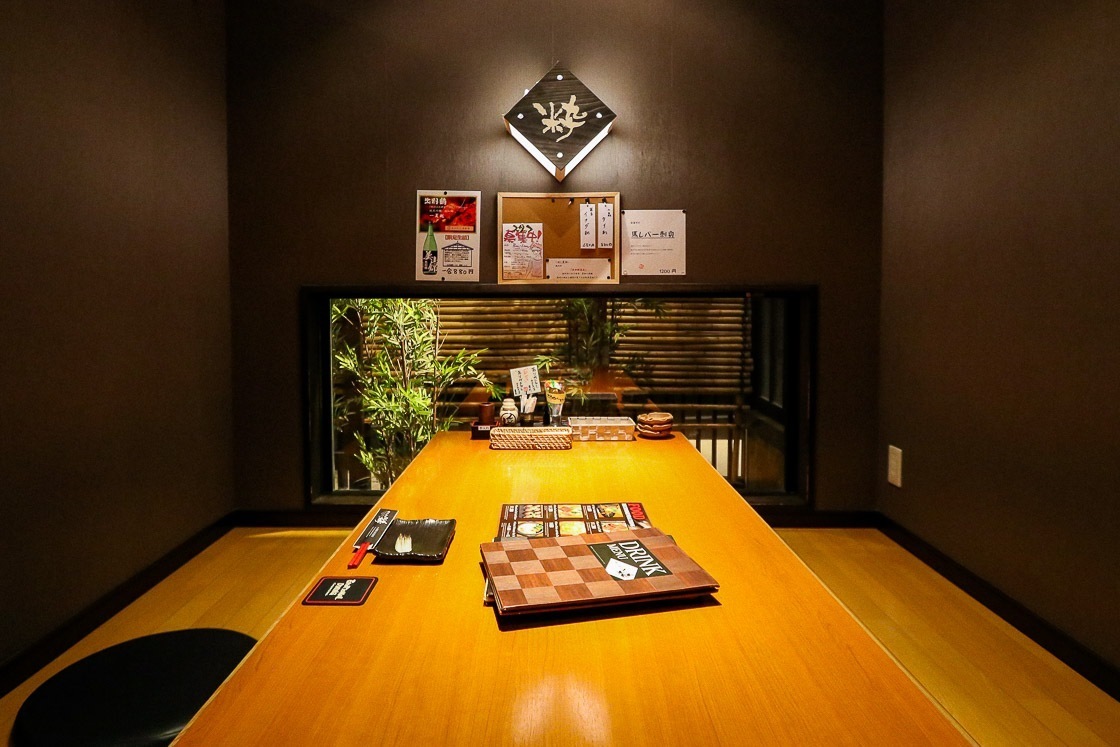
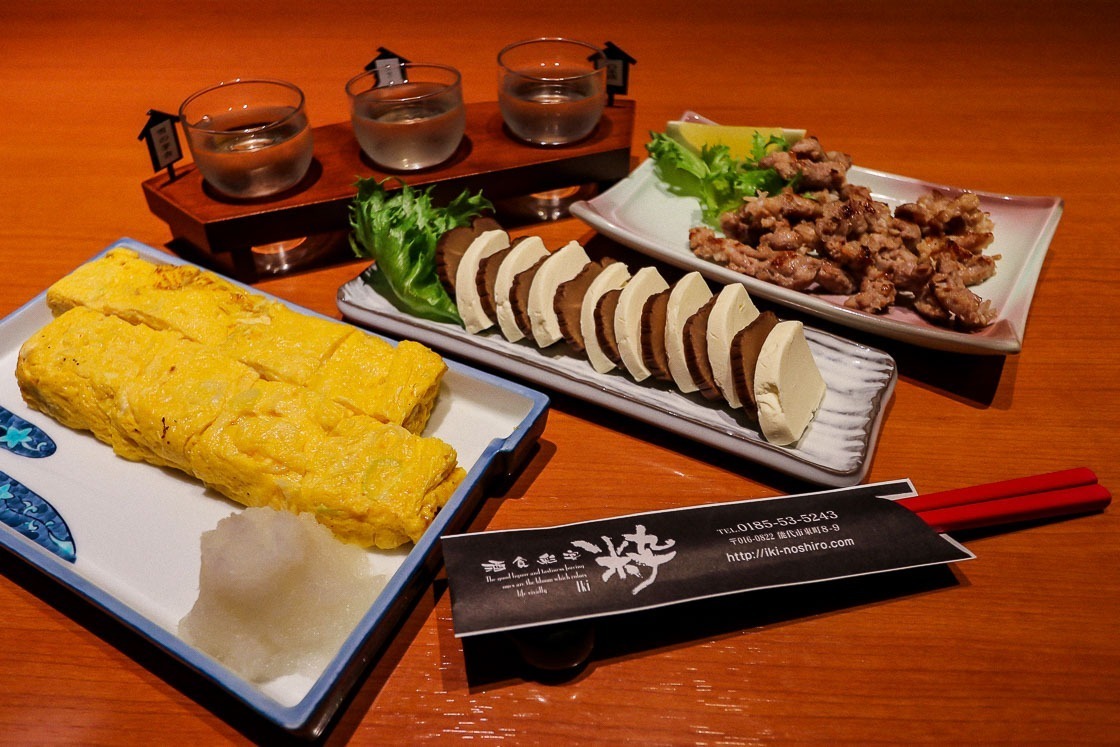
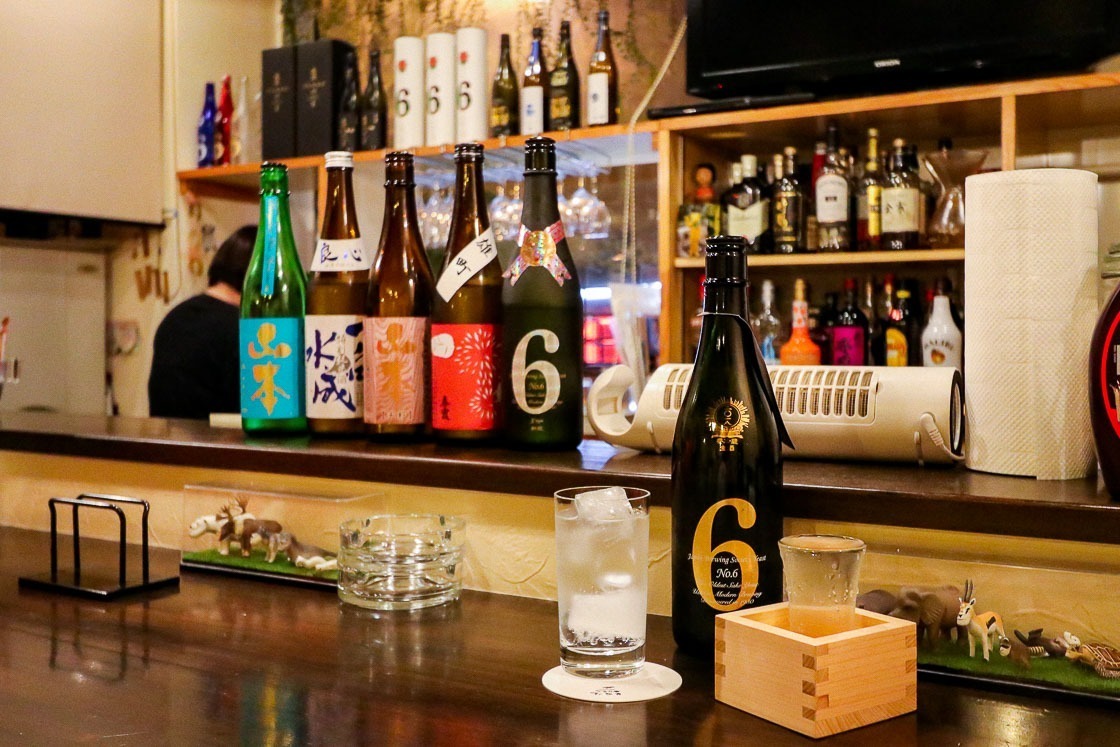
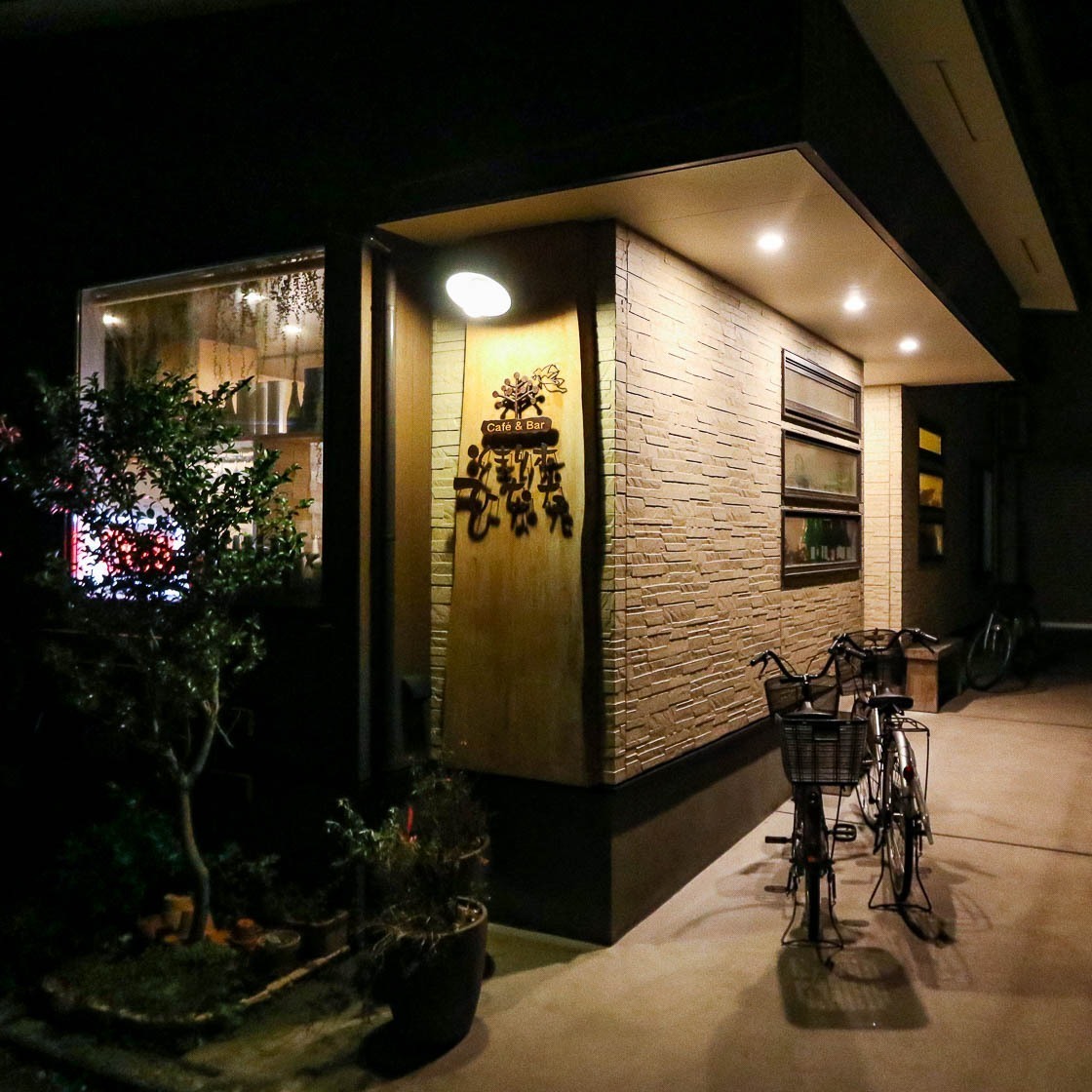
Day three
My last day in the Akita Shirakami area was a treat; everything I did was a new experience from walking an Akita-inu dog, to taking a sightseeing train and finally hiking in the Juniko lakes area. I woke up bright and early without a hangover from all the alcohol the night before - a sign of good alcohol - and headed to my first destination, a play date with Akita dogs. Note that the play date activity requires advance booking which can be done here.
It is best to ask the hotel front desk the night before to arrange for a taxi the following morning, which was what I did. The taxi driver brought me to the play date venue, and I spent one of the best hours of my life playing with two Akita dogs. Akita-inu are a large breed of dog, and the most famous Akita-inu has to be Hachiko, the loyal dog whose statue can be seen at Shibuya Station. Motose-san, the dog breeder, started me off with a 7-month-old puppy, which was so cute I just wanted to play and walk it forever. Then he brought out a 12-month-old puppy which was huge and honestly scared me a little when I first saw it. But it didn't take me long to get used to this bigger puppy, and it was just as fun like with the baby.
This play date with Akita dogs is the perfect activity for animal lovers, and those who may be considering buying an Akita dog and want to see what they are like first. Definitely one of the more unique experiences I've participated in and more fun than renting a dog to walk in Tokyo. The Akita dogs bred by Motose-san are of good pedigree, and one of his dogs was presented to the Russian figure skater Alina Zagitova.
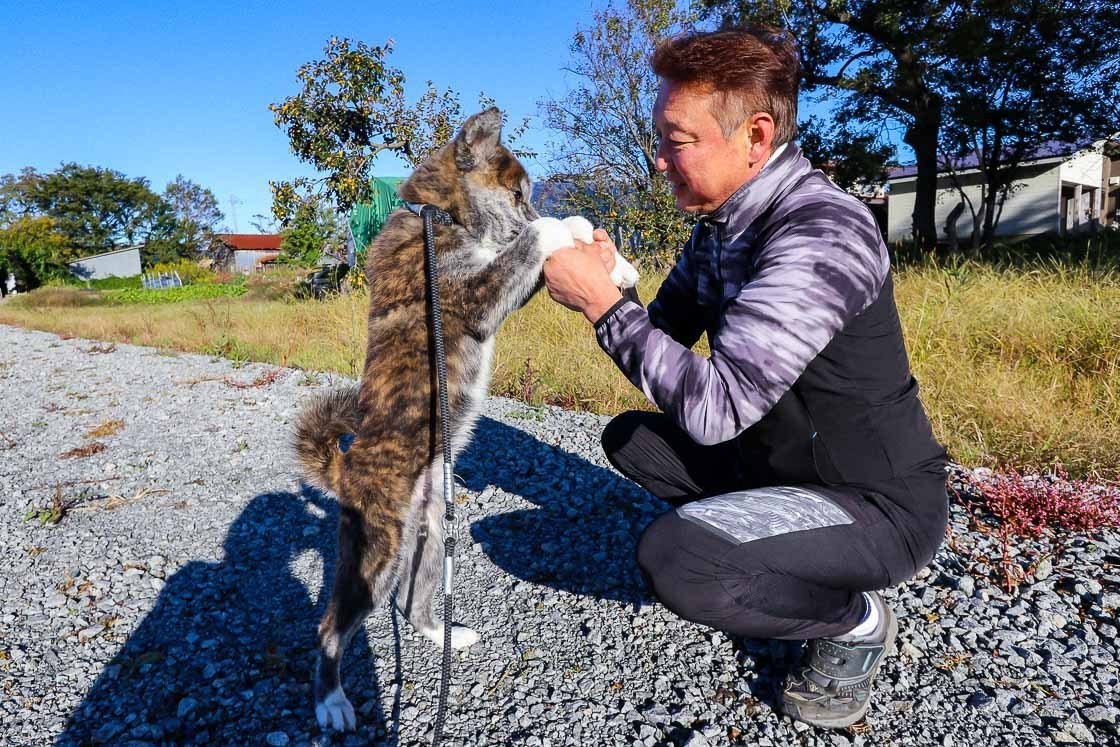
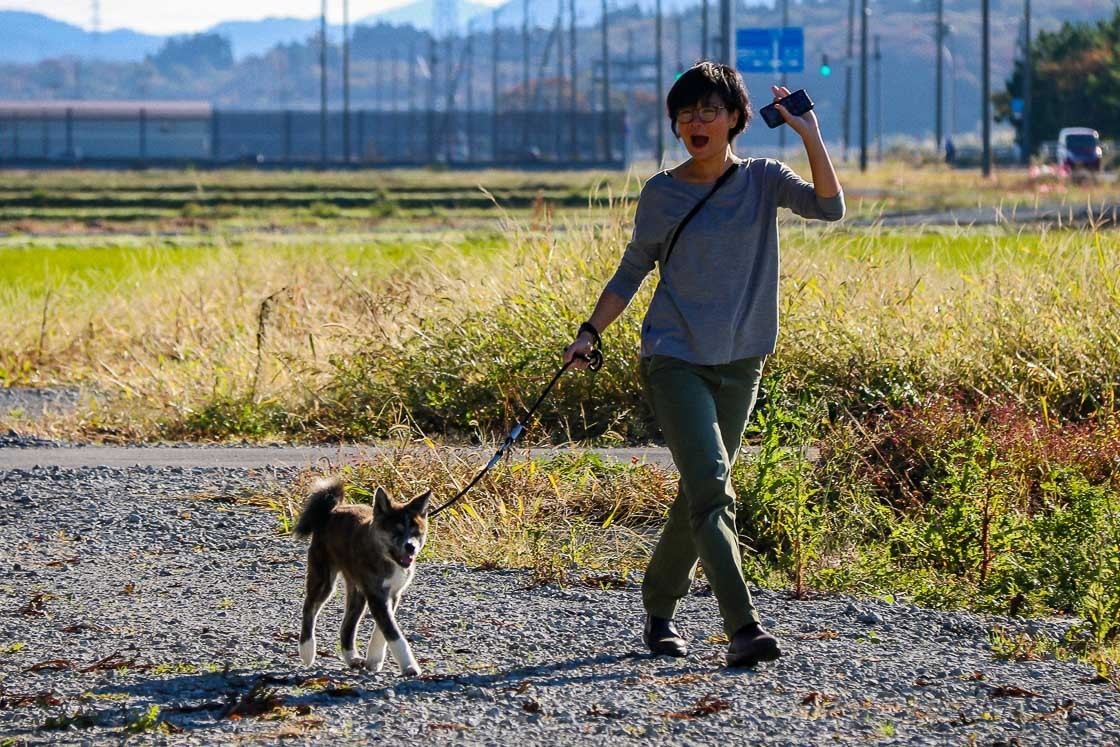
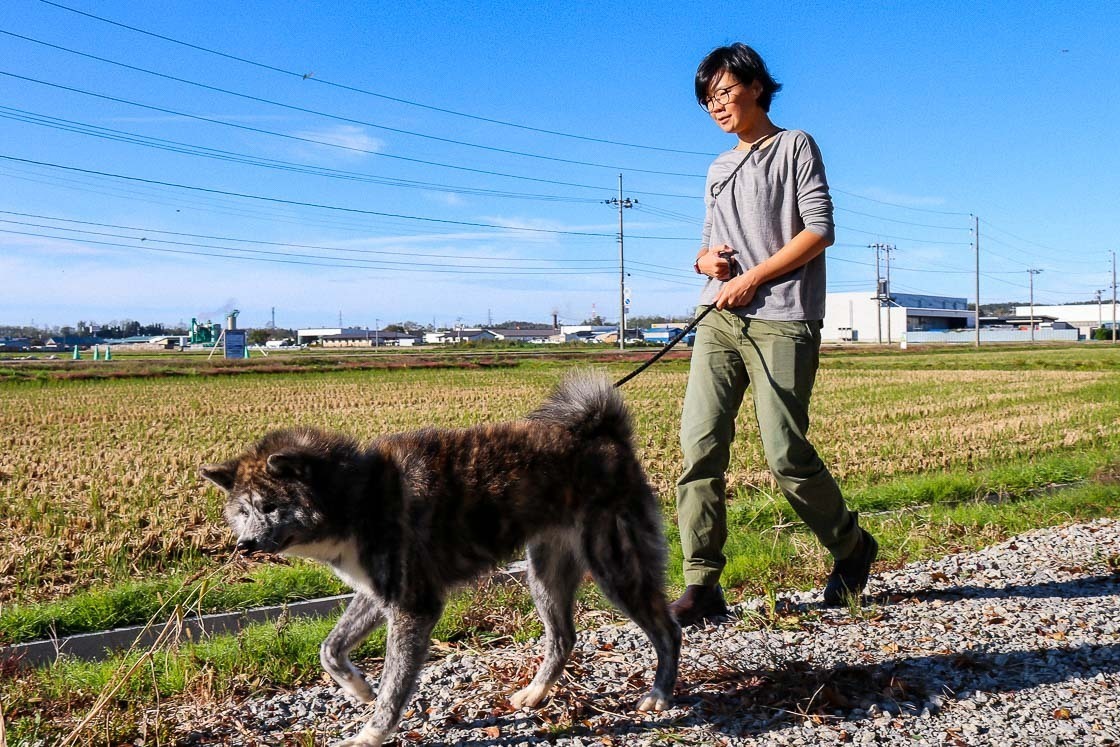
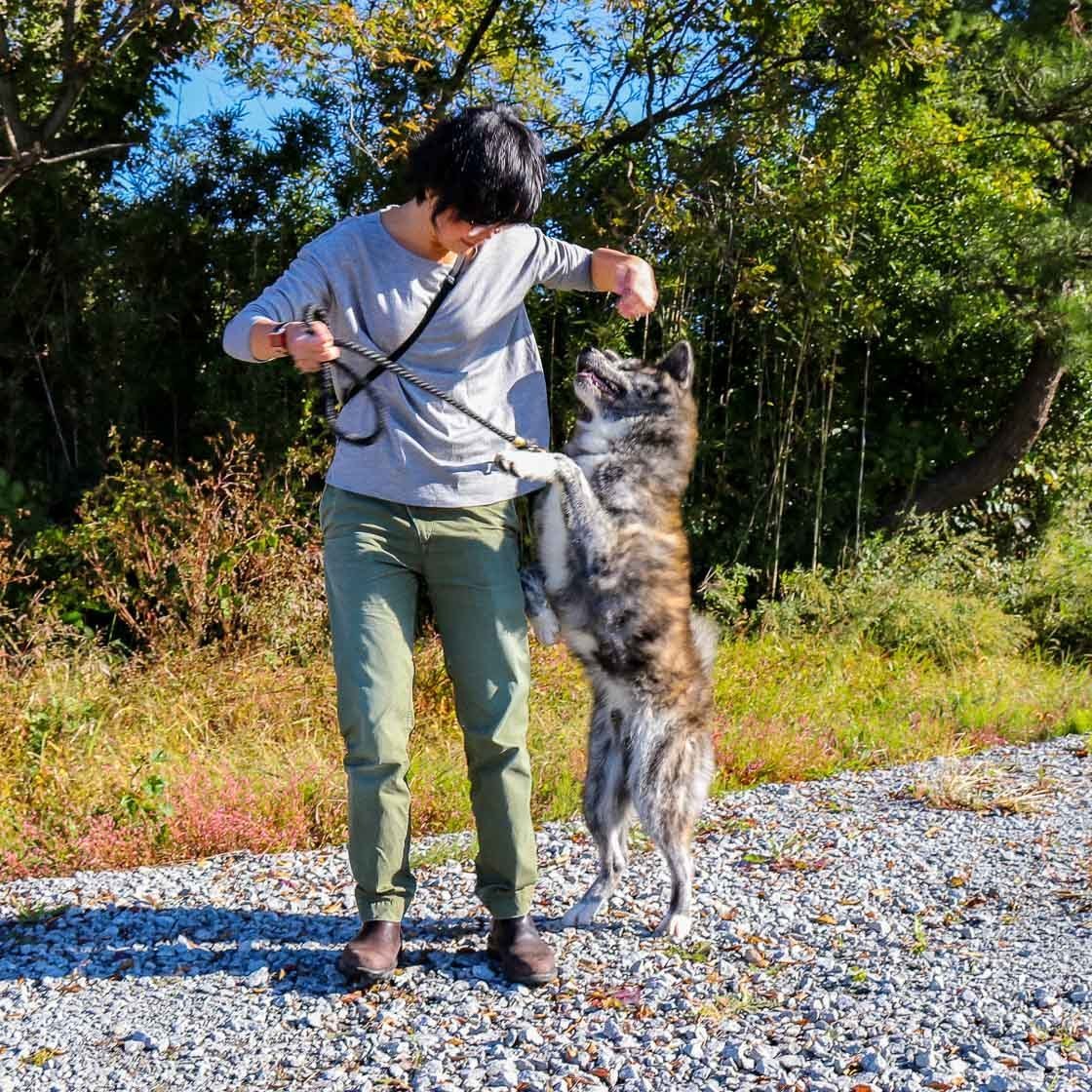
Before I knew it, it was time to leave my puppies behind and take a taxi to Noshiro Station, from where I would take the Resort Shirakami rapid train to the Juniko area. There are three Resort Shirakami train sets: Buna, Aoike and Kumagera, with the Buna carrying a small shop offering hot drinks and local specialties. The train, which travels along the coast between Aomori and Akita stations, requires advance seat reservations. I took the train from Noshiro Station to Juniko Station, which took just under an hour.
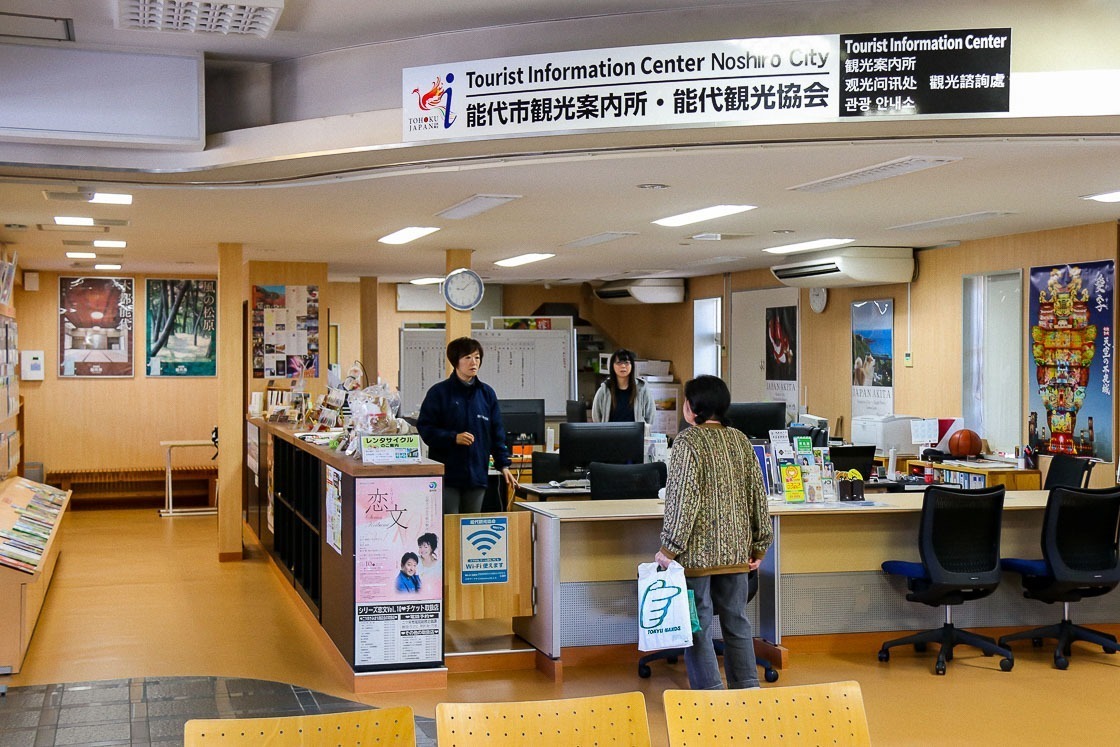
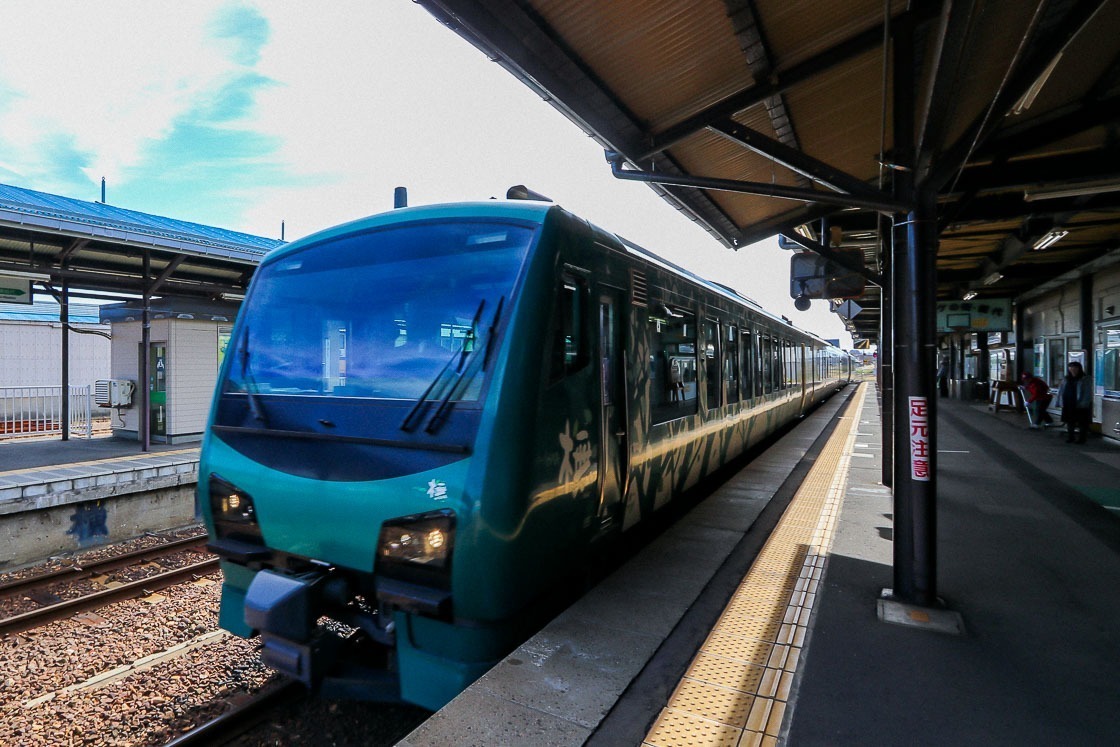
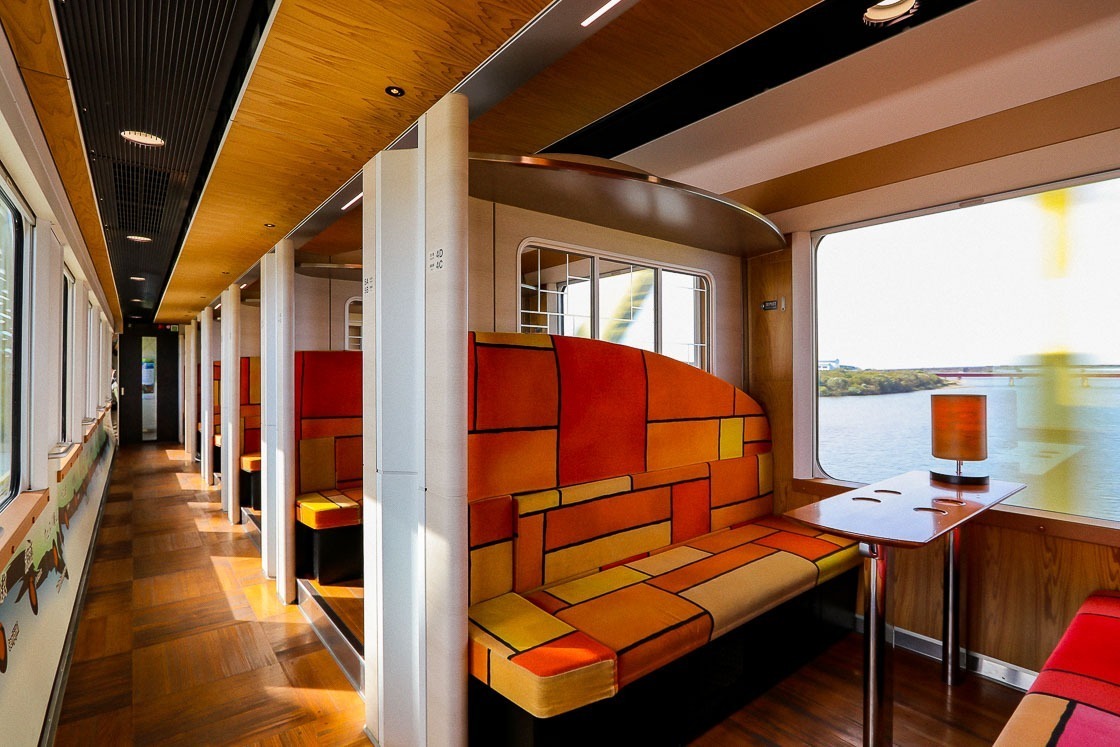
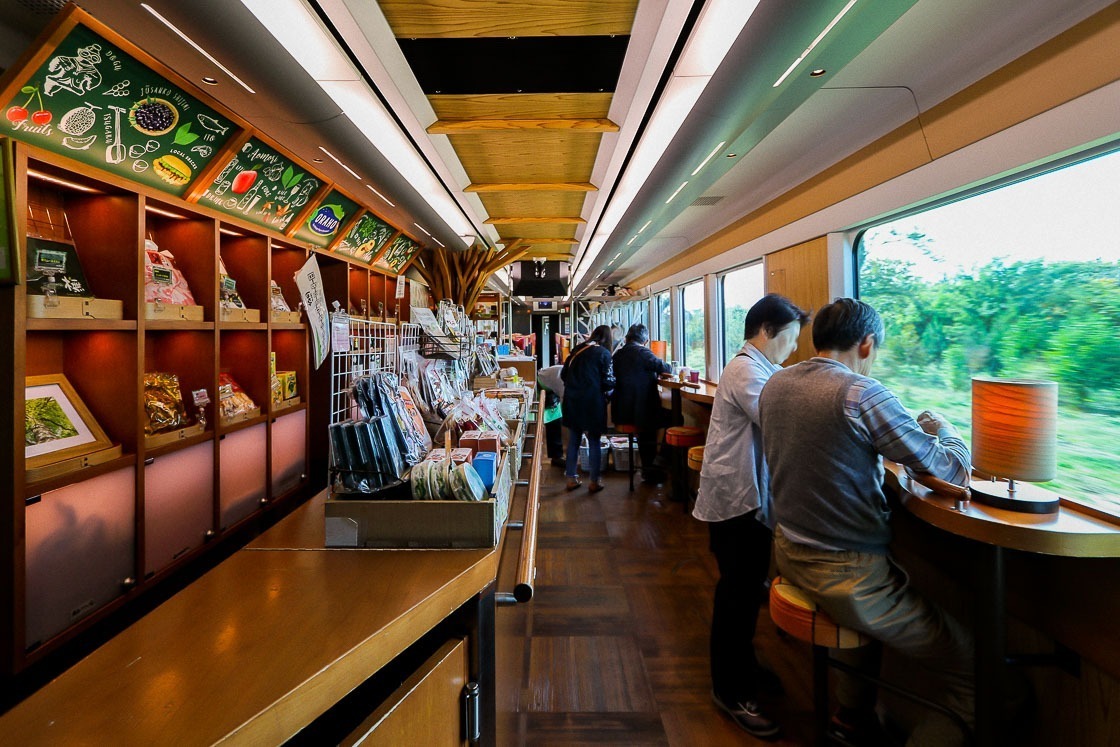
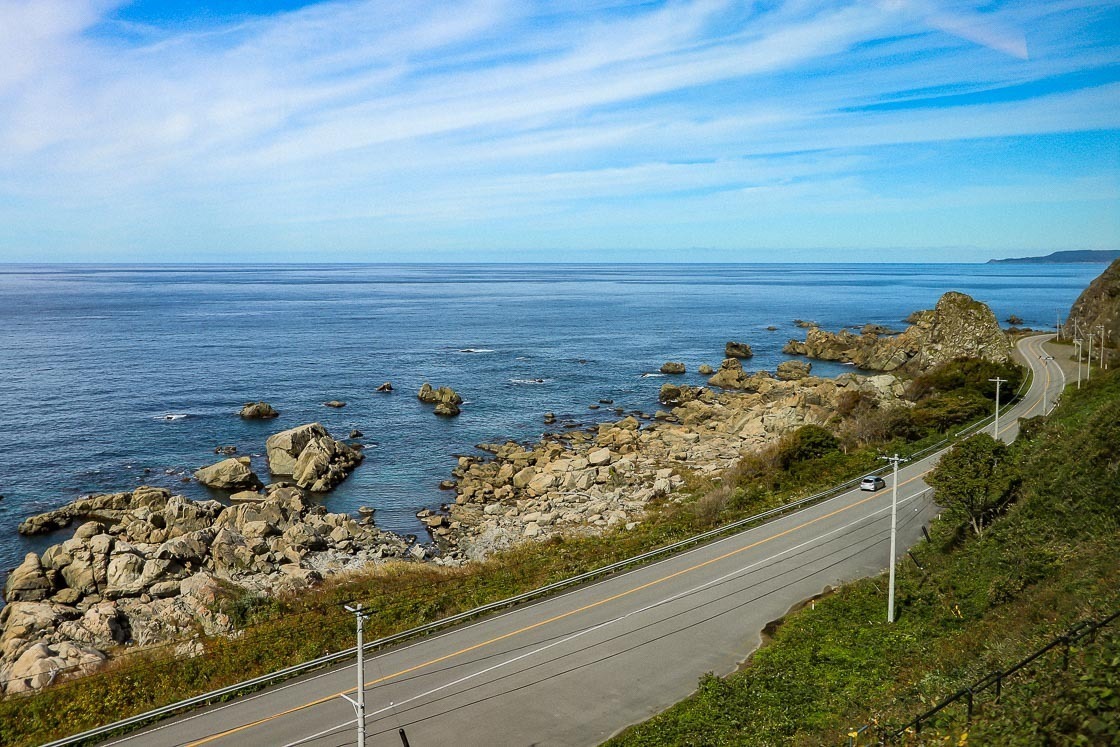
From Juniko Station, I took the hourly local bus to the Juniko lakes area where I would follow a walking trail to see two lakes and a beech forest. Hiring a guide is not necessary, but recommended for those who would like an insider's view, and uncover more about the area and its flora. It was a refreshing walk which took about an hour at a leisurely pace. Aoike was the first pond I visited, and also most famous for its clear blue waters. However, I preferred the second one I visited, Wakitsubo-no-Ike pond, which I thought was equally blue and had more space around it. I ended my walk at Juniko-an, a small tea house that serves matcha tea with the spring water that flows from Wakitsubo-no-Ike pond.
With that, it was time to head back to Noshiro Station and take the shuttle taxi service back to Odate-Noshiro Airport for my flight back to Tokyo. I had a great three days in the Akita Shirakami area, with each day topping the previous. There's plenty of hiking and outdoor activities for nature lovers, and delicious food and drink for the connoisseurs. I'm definitely looking forward to going back again especially to the Dakedai area which I missed out this time. I hear it's really nice and cool in the summer and perfect for camping. Only a few more months till summer!
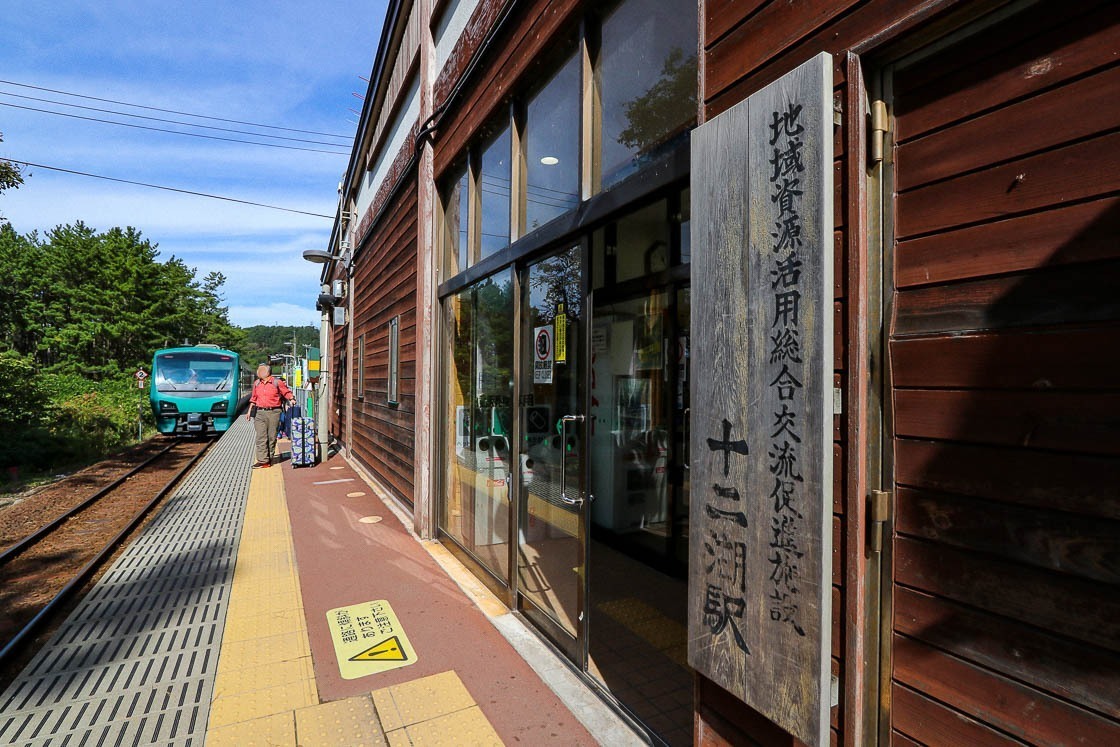
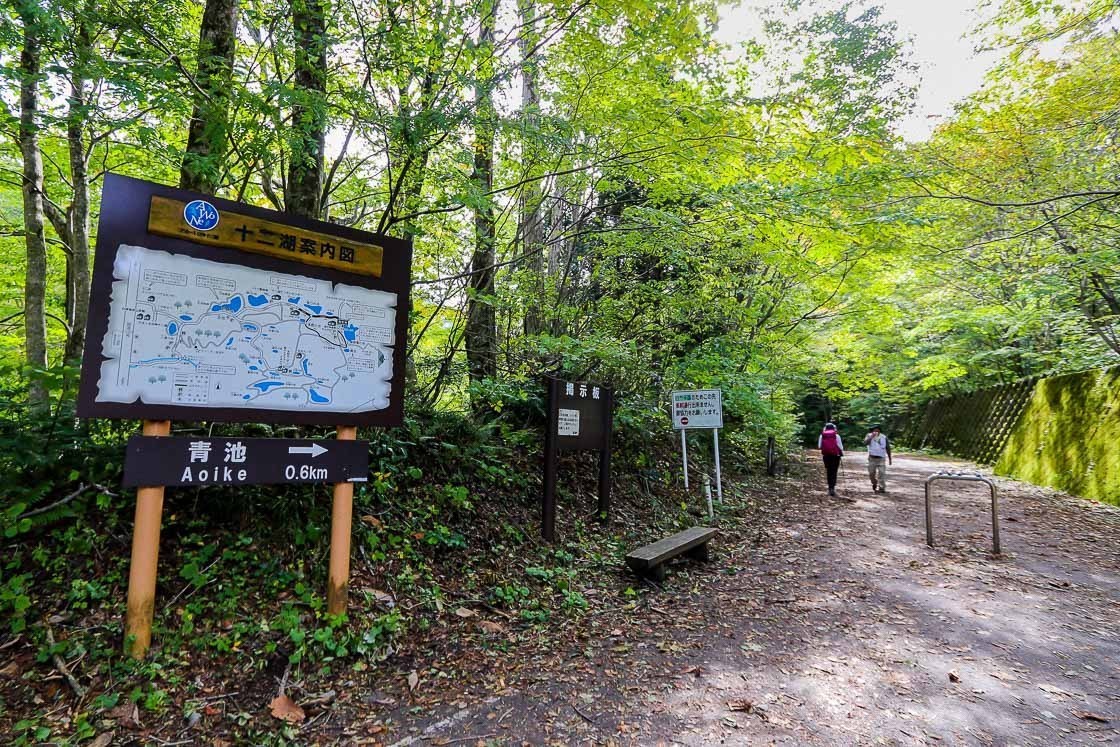
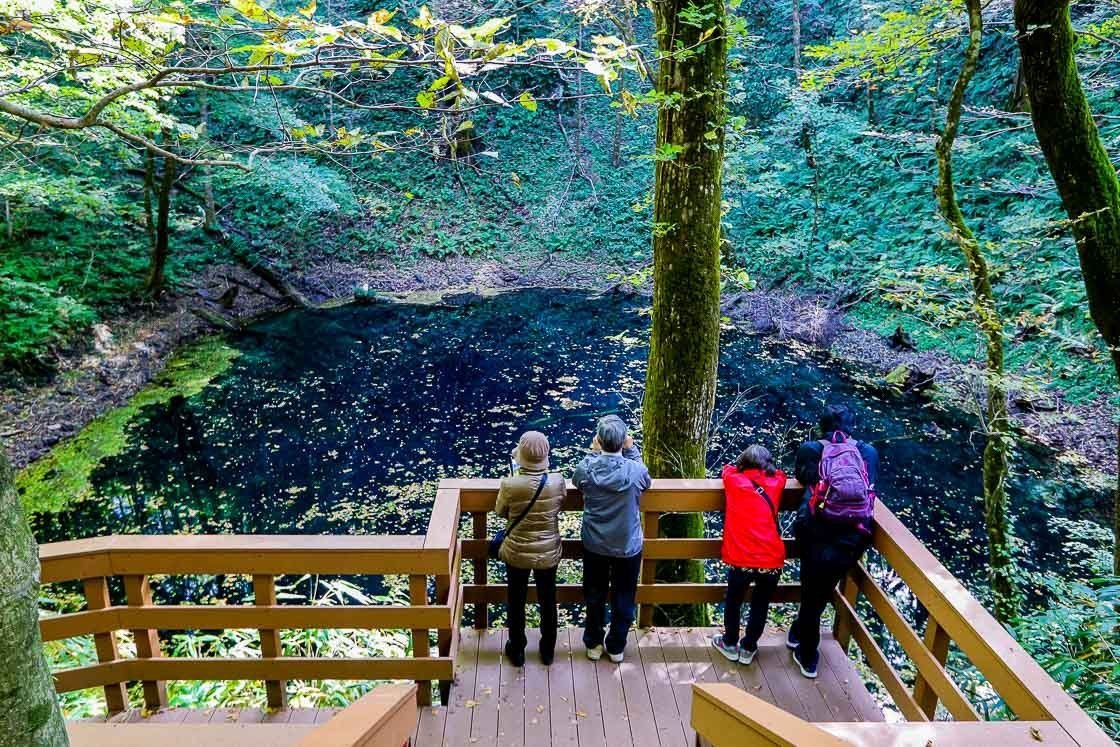
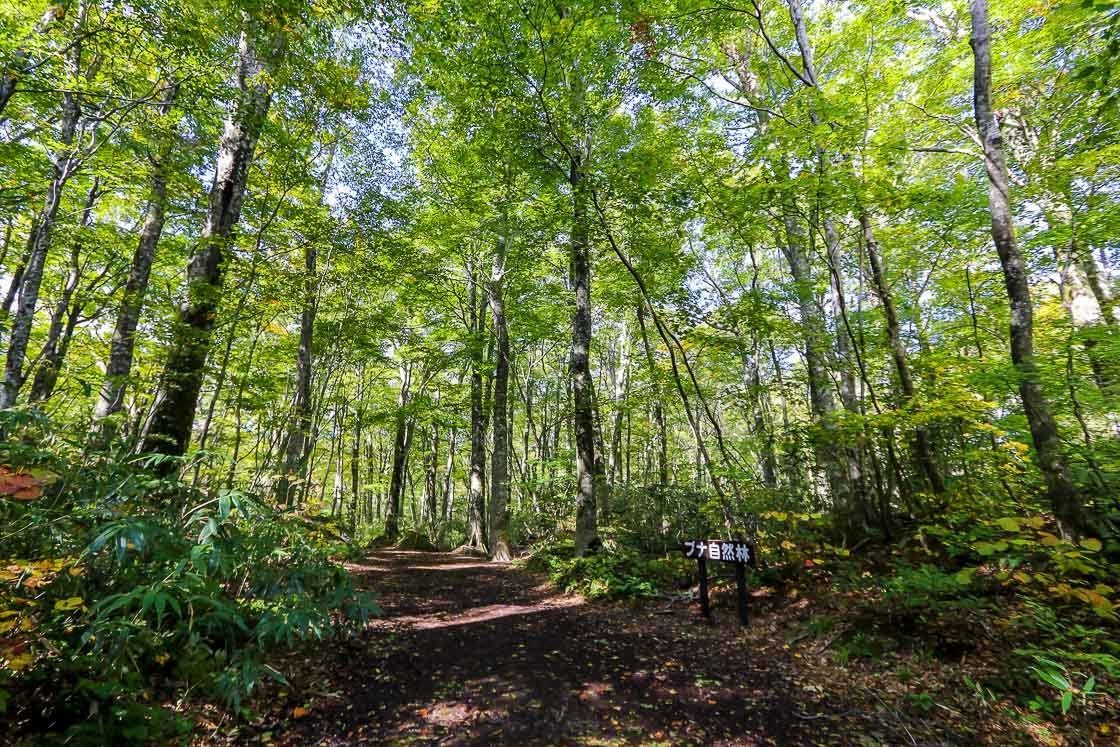
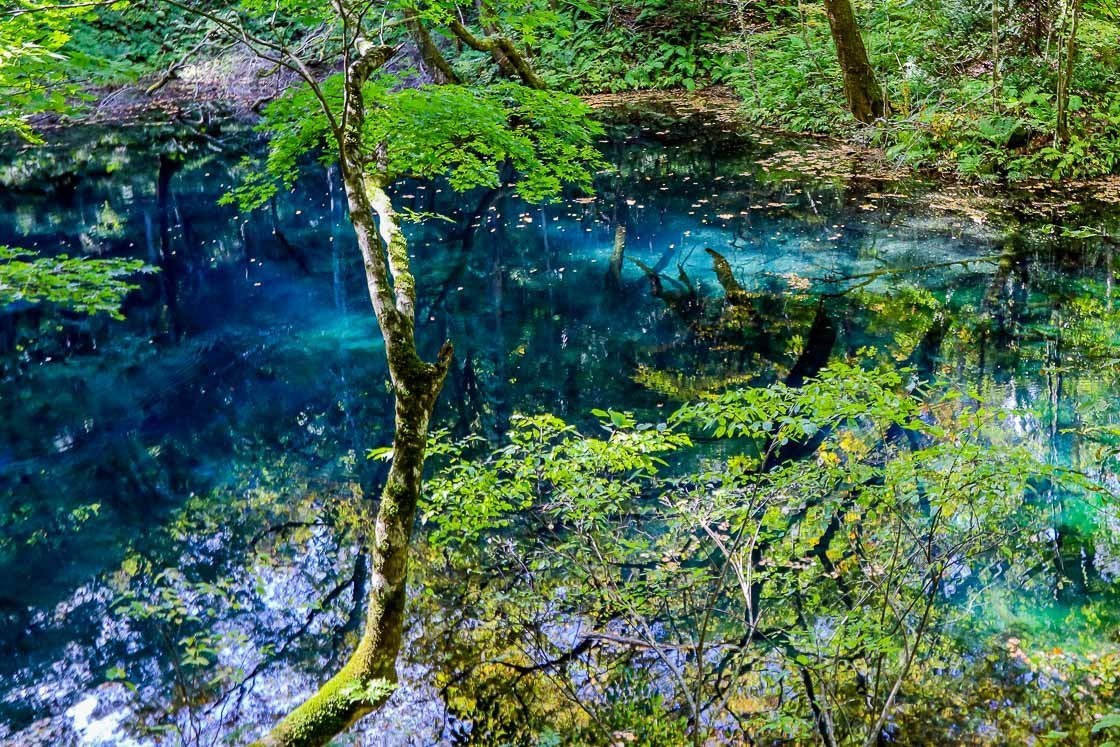
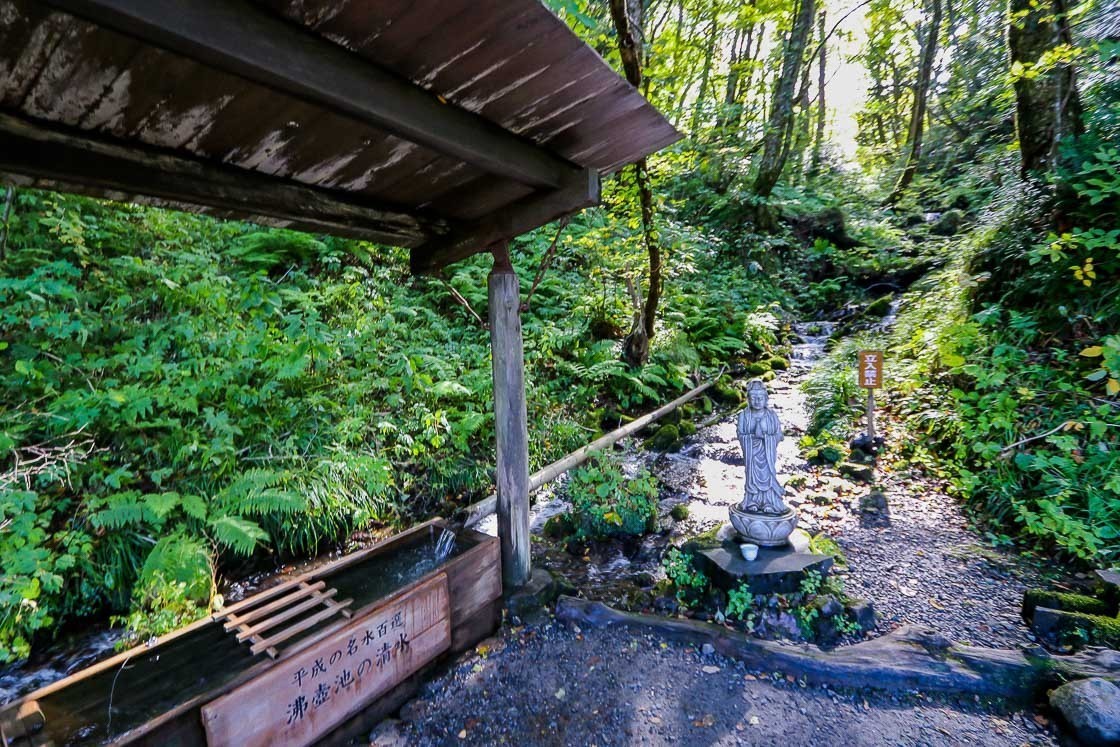
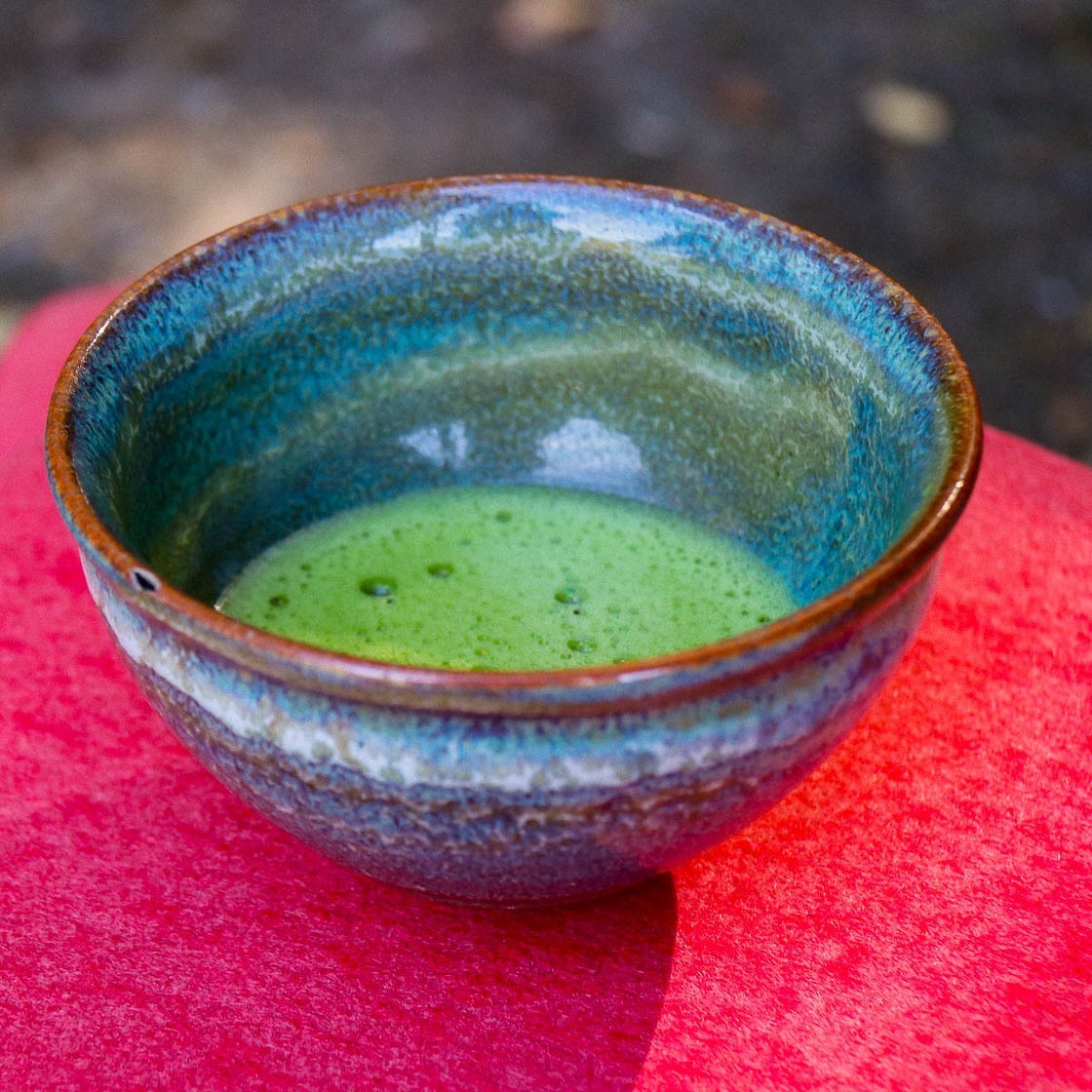
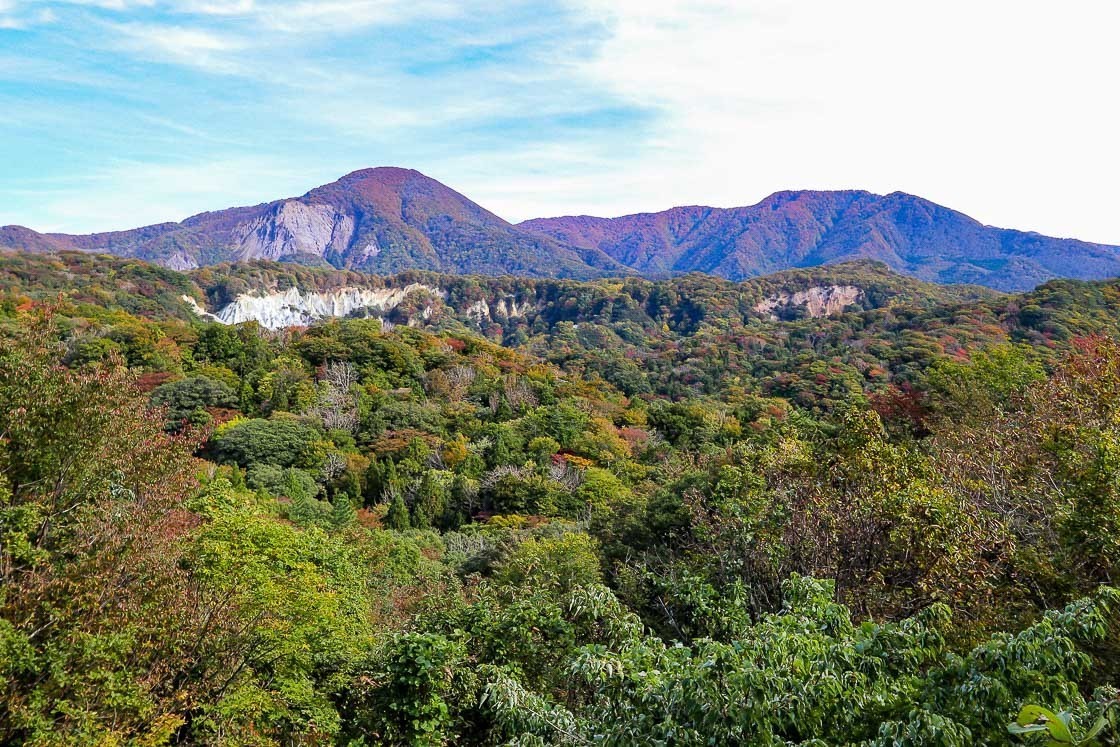
Access
A rental car was used for the first two days while public transportation was used to access the Juniko area on the last day. Rental car outlets can be found at Odate Noshiro Airport, the nearest airport, or in Noshiro City.
Akita dog play date
A taxi is the best way to access the play date venue. The hotel front desk will usually be able to assist with making taxi reservations, and it is recommended to arrange for a taxi the day before. The one way taxi ride takes about 10 minutes and costs between 1800-2000 yen. To get back to Noshiro Station after the activity, tell the same driver to come back in an hour or 1.5 hours.
Juniko lake area
Infrequent local trains (about 70 minutes, 860 yen one way, four trains a day) and the Resort Shirakami rapid train (about 50 minutes, 1390 yen one way, three trains a day, but frequency differs depending on the season) connect Noshiro Station to Juniko Station. The Resort Shirakami has three types of trains (Aoike, Buna and Kumagera); All seats are reserved and advance seat reservations are required. Hourly buses depart from Juniko Station for Oku Juniko (15 minutes, 360 yen one way) from where the lakes can be reached in a short walk.
Odate-Noshiro Airport
A shared taxi service provides transport from Noshiro and Higashi-Noshiro stations to Odate-Noshiro Airport and is timed to arrive at the airport about an hour before the flight. Reservations should be made by 15:00 the day before. The one way journey takes about 40-45 minutes and costs 1200 yen.
